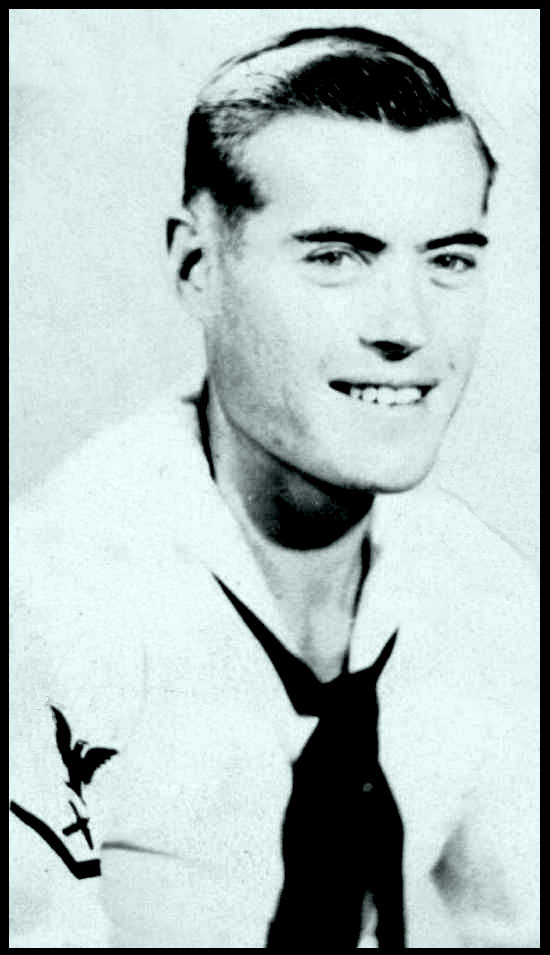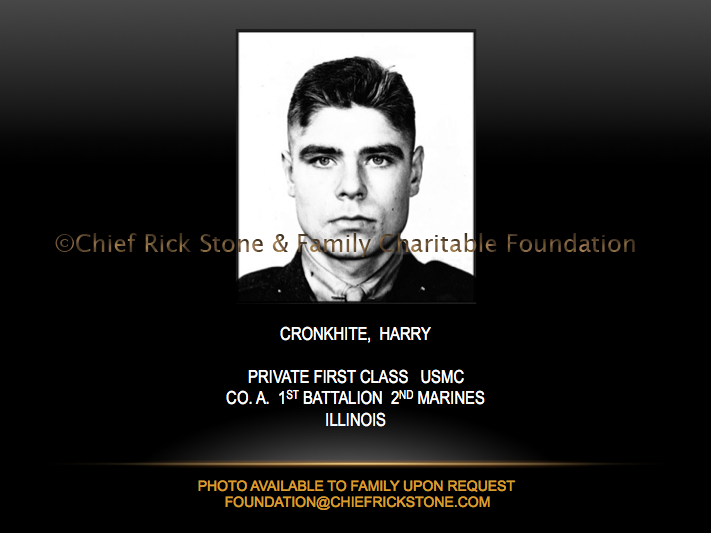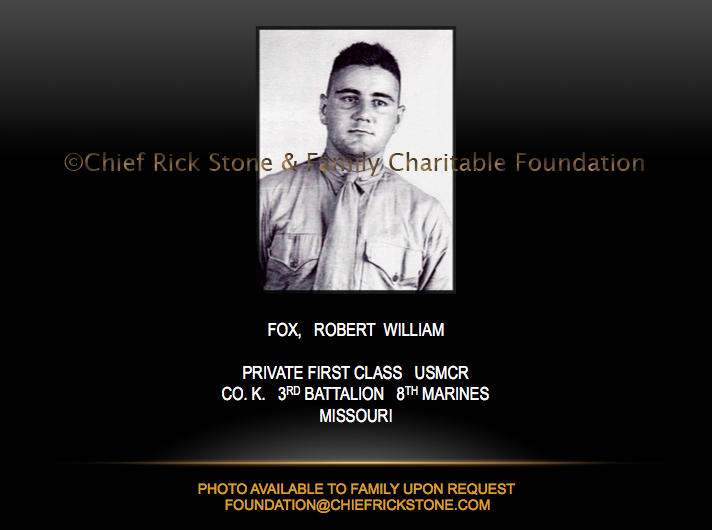“Left Behind”: Foundation member CAStone’s copyrighted photograph of a missing Marine’s helmet at a burial site under excavation on Tarawa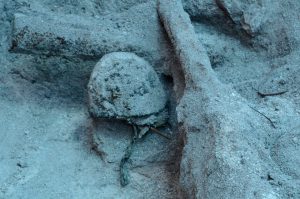
The Chief Rick Stone and Family Charitable Foundation has created this portion of our web site in humble thanks and appreciation for the families and friends of the following American servicemen and women who have generously donated to our Foundation.
Only with your support have our Foundation’s efforts to locate, recover and identify lost American heroes and to provide information to their families been possible.

THE CASE OF TECHNICAL SERGEANT HARRY ARNOLD “BUD” CARLSEN, USMC
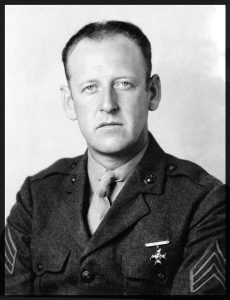
Technical Sergeant Harry Arnold “Bud” Carlsen was born in Brookfield, Illinois and joined the U.S. Marine Corps Reserves fifteen days after the Japanese attack on Pearl Harbor. He was assigned to the 2nd Amphibious Tractor Battalion, 2nd Marines and his mechanical skills with the new Landing Vehicle Tracked (LVT’s) soon earned him rapid promotions. On 20 November 1943, TSGT Carlsen reached shore on Tarawa’s Red Beach 2 aboard one of his LVTs. He was cut down attempting to attack a Japanese machine gun emplacement and buried several days later in Cemetery 33 on Tarawa. When all the burial sites on Tarawa were exhumed in 1946, TSGT Carlsen’s remains could not be identified and he was buried as an “Unknown” in the Punchbowl Cemetery in Honolulu, Hawaii. His case as an “Unresolved” casualty or MIA sat in limbo for the next 65 years.
In 2011, Chief Rick Stone, as a member of the Department of Defense, began investigating all of the “Unknowns” from the Battle of Tarawa using the “Random Incident Correlation System” (RISC) that he had developed during his career as a Dallas Police Commander.
On 26 March 2012, Chief Stone submitted an official report which listed TSGT Carlsen as a “Most Likely Match” to Unknown X-82. In a series of meetings inside the Joint POW/MIA Accounting Command (JPAC), Chief Stone advocated repeatedly for TSGT Carlsen’s recovery and identification without success, even appealing to the JPAC commanding general for TSGT Carlsen’s immediate recovery. In response, the JPAC Lab Director insisted that Chief Stone was wrong and that Unknown X-82 couldn’t be TSGT Carlsen because “voodoo science” was used in the case investigation and the other voodoo science Chief Stone suggested to identify TSGT Carlsen’s remains (DNA) was, well, just plain “voodoo”.
After Chief Stone left the Department of Defense, TSGT Carlsen’s family contacted the Foundation in 2012 and requested a comprehensive Family Report on Bud’s case. The family also contacted their congressman who requested a copy of Chief Stone’s JPAC investigation. In an article in the Chicago Tribune on 20 October 2013, Chief Stone is quoted as saying: “I’d bet my house, your house and every house down the block that it (X-82) is Tech. Sgt. Carlsen.”
Also included in the article: “Chief Stone said his requests to disinter X-82 and several other graves were denied. When he offered to pay out of pocket to exhume X-82, he said some JPAC officials laughed.”
With each passing year, the utilization of advanced law enforcement techniques and acquisition of sophisticated technologies convinced Chief Stone and the Foundation more and more that TSGT Carlsen was X-82. Bud’s Family Reports were updated in 2014 and 2016 to reflect the fact that TSGT Carlsen was a Most Likely Match to only one “Unknown” in the Punchbowl Cemetery: X-82.
Finally, JPAC was disbanded under a firestorm of public and congressional criticism and their replacement agency (DPAA) finally acted on Chief Stone’s recommendation and exhumed Unknown X-82 in 2017.
On 31 July 2018, TSGT Carlsen’s family was notified by the Marine Corps that Bud had been identified by DNA as Unknown X-82 from the Punchbowl Cemetery.
Additional Honored Heroes In Alphabetical Order

Gunner’s Mate 1st Class William Powers Anderson and wife, Virginia
Gunner’s Mate 1st Class Anderson was born in Lorenzo, Texas in 1920 and enlisted in the United States Navy Reserves only ten days after the Japanese attack on Pearl Harbor in 1941. With very little basic training, Andy (as he was known to family and friends) was rushed to join the crew of the USS Pennsylvania, one of the damaged battleships from Pearl Harbor being repaired on the West Coast. Gunner’s Mate Anderson served on board the Pennsylvania during the Aleutian Campaign and the attacks in the Gilbert Islands in 1943. After advanced gunnery school at the Washington Navy Yard, Gunner’s Mate Anderson was assigned to serve on newly constructed cruisers, including the USS Guam and the USS Dayton. After participating in attacks on the Japanese homeland in 1945, he was aboard the USS Dayton in Tokyo Bay when Japan surrendered in September 1945. GM1c Anderson survived the war and moved back to Texas. He died on 19 September 1980 in Amarillo, Texas at age 60.
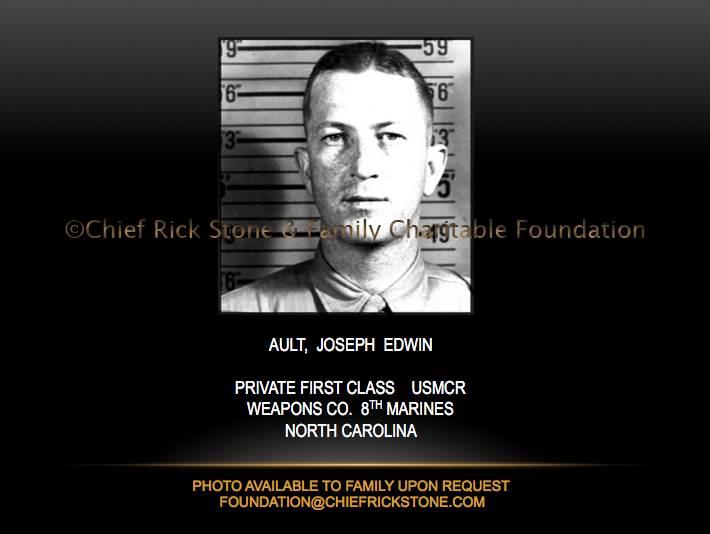 PFC Ault was born in Knoxville, Tennessee and moved to Charlotte, North Carolina where he married and created a professional career as a florist. Ed, as he was known to his family and friends, became a pillar of local society and the business community in Charlotte. He enlisted in the Marine Corps as a Private when he was 33 years of age. PFC Ault became a member of the Weapons Company, 2nd Battalion, 8th Marines where he trained as a crew member on a 37 mm anti-tank gun. During the invasion of Tarawa on 20 November 1943, PFC Ault was killed by a gunshot wound to the head about 50 yards inland from Red Beach 3. PFC Ault’s body was likely buried near where he fell in battle by his company mates. In researching PFC Ault’s case for his family, the Foundation found a map with the exact location where PFC Ault was killed. However, his body remains unrecovered and unidentified. He remains in “Unresolved” status to this day.
PFC Ault was born in Knoxville, Tennessee and moved to Charlotte, North Carolina where he married and created a professional career as a florist. Ed, as he was known to his family and friends, became a pillar of local society and the business community in Charlotte. He enlisted in the Marine Corps as a Private when he was 33 years of age. PFC Ault became a member of the Weapons Company, 2nd Battalion, 8th Marines where he trained as a crew member on a 37 mm anti-tank gun. During the invasion of Tarawa on 20 November 1943, PFC Ault was killed by a gunshot wound to the head about 50 yards inland from Red Beach 3. PFC Ault’s body was likely buried near where he fell in battle by his company mates. In researching PFC Ault’s case for his family, the Foundation found a map with the exact location where PFC Ault was killed. However, his body remains unrecovered and unidentified. He remains in “Unresolved” status to this day.
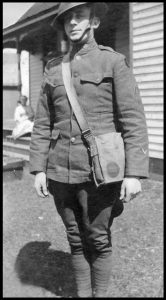
PVT Loren Monroe Baylis
Private Baylis was born in Riley, Michigan in 1894 and enlisted in the United States Army during World War I. He trained as a member of the Camp Custer Detachment, 104th Field Artillery. The photo above was taken at Camp Gordon in Atlanta, Georgia. PVT Baylis was transported overseas on board the USS America along with members of the 27th Division, 52nd Field Artillery Brigade, 104th Field Artillery arriving in Brest, France on 4 March 1918. PVT Baylis survived the war and moved to Edinburg, Texas in 1926. He died on 15 May 1971 in Harlingen, Texas at age 77.
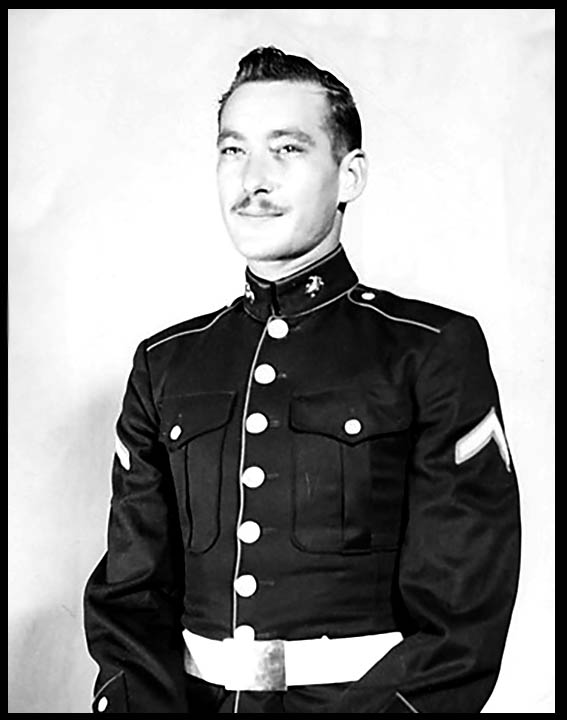
SGT John Andrew Blankenburg
SGT Blankenburg was born in Panhandle, Texas and enlisted in the Marine Corps in 1941. He was a member of the 2nd Aviation Engineer Battalion, 1st Marine Division during the battles of Guadalcanal, Kwajalein, Eniwetok, Guam, and Iwo Jima. Re-enlisting in 1948, SGT Blankenburg was assigned to the 1st Engineer Battalion of the First Marine Division. He was shipped to Korea in August 1950 and participated in battles at the Pusan Perimeter, Inchon Landing, Seoul, Wonsan Landing, and Chosin Reservoir. On the cold night of 1 December 1950, SGT Blankenburg was attached to a small unit of about 15 Marines who were holding a perimeter at Hagaru-Ri when about 240 Chinese attacked. Sgt. Blankenburg was killed during the fight. His body was not recovered until 1954 when he was identified by the U.S. Army’s Central Identification Laboratory and sent home to rest with his parents and brother in Pampa, Texas.
GM3c Paul Sidney Blankenburg
Gunners Mate 3rd Class Blankenburg was born in Panhandle, Texas and enlisted in the U.S. Navy in 1941. He served on the cruiser USS Brooklyn in the North Atlantic, Caribbean, England, and during the invasion of North Africa. The USS Monterrey was a new light aircraft carrier when Blankenburg joined her in 1943. He served on board with future President Gerald Ford and participated in strikes against Makin Island, Kavieng, New Ireland and supported the landings at Kwajalein and Eniwetok. The Monterrey then conducted raids in the Carolines, Marianas, New Guinea, and the Bonin Islands. GM3c Blankenburg fought in the Battle of the Philippine Sea and strikes against Wake Island, the southern Philippines, and the Ryukyus. As the war drew to a close, the Monterrey supported the landings at Leyte and Mindoro in the Philippines. Ironically, after surviving World War II, Blankenburg was killed in an industrial fire in Pampa, Texas in 1954.
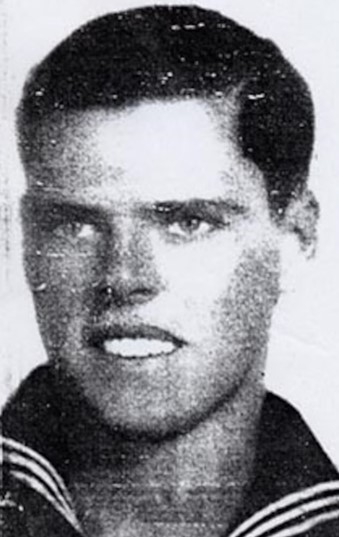
Fireman 3rd Class Clarence Arvin Blaylock
Fireman 3rd Class Clarence Arvin Blaylock was born in Tarrant County, Texas. He was a Boy Scout and member of his high school ROTC program before joining the Navy in 1940. He boarded the USS Oklahoma as a member of the battleship’s crew on 22 July 1941 and was on board the Okie when the Japanese attacked Pearl Harbor on 7 December 1941. After the attack F3c Blaylock’s body was found but could not be segregated from other recovered remains. He was listed as “Missing in Action” (MIA) and buried as an “Unknown” in the Punchbowl Cemetery in Honolulu, Hawaii.
In 2015, the Department of Defense began exhuming the “Unknowns” from the USS Oklahoma with the hope that DNA technology by the Armed Forces DNA Identification Laboratory (AFDIL) could identify the co-mingled remains. On 29 July 2019, the Department of Defense announced that F3c Clarence Arvin Blaylock had been identified by DNA comparison. After his identification by DNA in 2019, F3c Clarence Arvin Blaylock was returned to the Punchbowl Cemetery and re-buried with a grave marker listing his name in Plot O, Grave Number 326 on 7 November 2022.
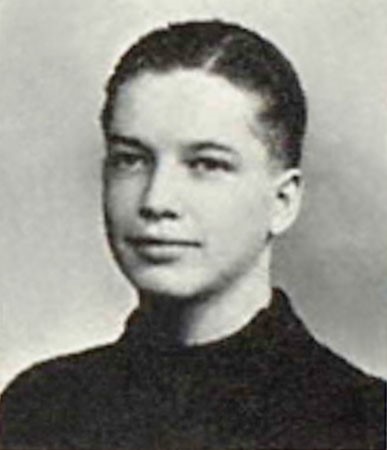
Chief Fire Controlman William Lewis Booth
CFC Booth was born in Clinton, Iowa to Roy Edwin Booth and Ivy Geleene Curl Booth. William enlisted in the U.S. Navy in Des Moines, Iowa on 16 July 1934 and re-enlisted two more times while he pursued a rating as a Fire Controlman. Fire Controlman Booth served on the cruisers USS Louisville and USS Northampton. He was transferred to the submarine, USS Triton, on 27 December 1940 and was on board for all six of Triton’s war patrols. On 15 March 1943, the Triton radioed that she was chasing a Japanese convoy that was protected by escorts between Rabaul and the Shortland Islands. Nothing was ever heard from Triton again and she was presumed lost. CFC Booth and 73 crewmates from the Triton continue to be listed as “Unaccounted For” by the Department of Defense. The wreckage of the Triton has never been found.
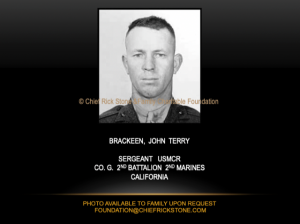
SGT John Terry Brackeen
SGT Brackeen stated he was born in Tipton, Oklahoma and was known as “Pat” or simply “J.T.” to his family and friends. Pat left school after the sixth grade and he later found work on a county road crew. He enlisted in the Marine Corps less than two weeks after the attack on Pearl Harbor. As a member of G Company, 2nd Battalion, 2nd Marines, Pat fought on Tulagi and Guadalcanal Islands in August 1942. During the invasion of Tarawa on 20 November 1943, SGT Brackeen was killed near Red Beach 2. SGT Brackeen’s body was not identified after the battle and he is currently one of thirteen members of his company who remain “Missing in Action.”
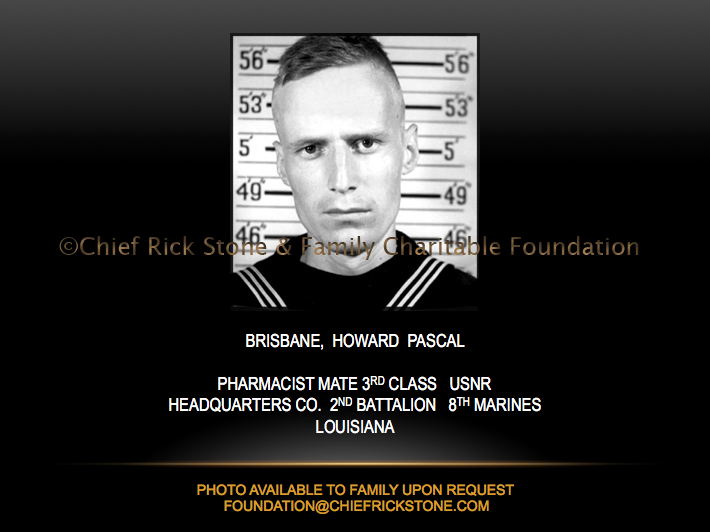
PhM3c Howard Pascal Brisbane
Pharmacist Mate Third Class Howard Brisbane was born in Fairfield, Alabama. He and his identical twin brother, Miles, grew up in New Orleans, Louisiana where Howard enlisted in the Navy on 19 July 1942. Trained as a Medical Corpsman, PhM3c Brisbane was attached to the 2nd Battalion, 8th Marines. PhM3c Brisbane was in the first wave with a liberty friend, Stanley Bowen, who he had known during training. HA1c Bowen observed PhM3c Brisbane “machine gunned” and killed. After the battle, HA1c Bowen later identified PhM3c Brisbane’s body approximately 30 yards from the water’s edge and slumped on the beach. PhM3c Brisbane’s body was recovered and buried in Grave Number 14, Cemetery 27 on Tarawa. Unfortunately, the entire cemetery was lost until 2015. PhM3c Brisbane was officially identified by the Armed Forces DNA Identification Laboratory on 2 June 2016 and he was returned home to his family for burial in Row 60, Grave Number 11645 in Arlington National Cemetery on 9 June 2017.
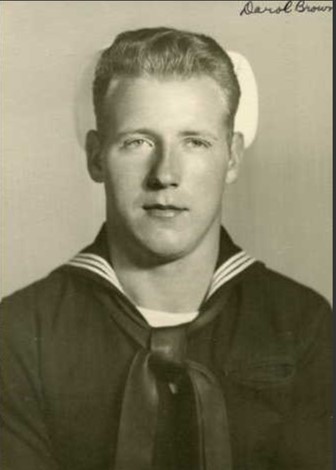 Seaman 2nd Class Darol Charles Brown
Seaman 2nd Class Darol Charles Brown
Darol Brown was born in Lead, South Dakota where his father was a gold miner. Darol learned the rudiments of being an electrician in high school where he created lighting effects for school plays. Darol was drafted into the Navy on 28 January 1944 and served as an enlisted man aboard the newly commissioned destroyer/minelayer USS Lindsey. On 12 April 1945, the Lindsey was struck by two Japanese kamikaze aircraft about 15 miles north of Kerama Retto, Okinawa. The Lindsey survived the attacks but about 60 feet of her bow was blown off. S2c Brown was one of thirty-six members of the the Lindsey’s crew who were originally listed as “Missing in Action.” In February 2025, S2c Brown’s family requested a comprehensive Family Report from the Foundation which noted that casualties from the Lindsey had been buried in Zamami Shima Cemetery on Okinawa. Foundation investigators determined that S2c Brown is a “Most Likely Match” to three “Unknowns” originally buried on Okinawa. To date, S2c Brown’s body has yet to be recovered and identified.
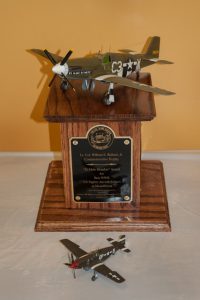
LTC William Eustace Bullard, Jr.
Lieutenant Colonel William E. Bullard, Jr. was born on 2 October 1919 in Burkburnett, Texas and enlisted as a Private in the U.S. Army five months before World War II. He later transferred to the Air Corps and was trained to fly the P-51B Mustang fighter as a member of the 363rd Fighter Group in France. Toward the end of the war, LTC Bullard was captured by German forces and was imprisoned as a POW at Dulag Luft Grosstychow Dulag 12. He was liberated at the end of the war and returned to a long life in Kerrville, Texas. On 14 September 2015, LTC Bullard died in Kerrville at age 95.
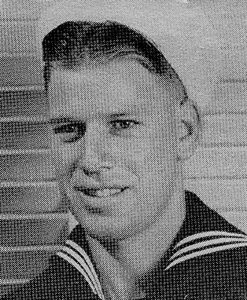
S1c Steve Campbell Burkhart, Jr.
S1c Burkhart was born in Nelta, Texas and enlisted in the U.S. Navy when he was only 19 years of age. He was a member of Squadron VB-115. The PB4Y-1 patrol aircraft, of which he was a crew member, was shot down by the Japanese on 22 April 1944 near Truk Atoll. In 1946, a group burial site was discovered on Puluwat Island and the remains of seven individuals were recovered and temporarily buried as “Unknowns” in the U.S. Military Cemetery on Moen Island. In 1948, the seven “Unknowns” were disinterred and examined by the Central Identification Laboratory in Hawaii. Five of the seven were identified as crew members of the PB4Y, including S1c Burkhart. S1c Burkhart was given a final resting place in Section F, Grave 491 at the National Memorial Cemetery of the Pacific (Punchbowl) in Honolulu, Hawaii.
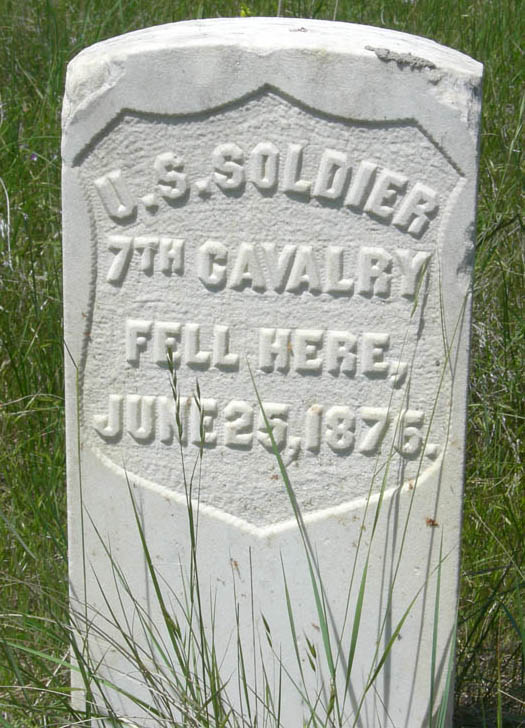
Sergeant James Robert Bustard
James Robert Bustard was born in Donegal, Ireland. The son of James Bustard and Elizabeth Funston, James had hazel eyes, light hair, a fair complexion and was 5’ 6 ½” tall. He had three brothers and several sisters. When he was 19 years old in 1863 he quietly left home one night and the family never heard from him again. James immigrated to America and enlisted in the U.S. Army on 18 March 1867 when he joined the 7th Cavalry. He was on his third five year enlistment at Fort Abraham Lincoln in the Dakota Territory when Lieutenant Colonel George Armstrong Custer led his men into the Battle of the Little Bighorn on 25 June 1876. All 210 men of Custer’s command were killed in action, including SGT Bustard. In 2023, the Foundation provided a comprehensive “Family Report”, as requested, to SGT Bustard’s family. Based on this investigation, Foundation researchers believe that SGT Bustard fell near what is now labeled Marker Number 183 on the battlefield just a few feet from his company commander, Captain Myles Keogh. SGT Bustard was ultimately buried as an “Unknown” at the base of the Little Bighorn Battlefield National Monument.

Private Armantheus Dewitt Cather
A. D. Cather was born in Shippensburg, Pennsylvania to Henry B. Cather and Mary O’Donnell Cather and was known as “Dewitt” to his family and friends. Dewitt had gray eyes, brown hair, a fair complexion and was 5’ 8 ½” tall. When he was just 13 years old, Dewitt’s mother died in childbirth. Dewitt became a fireman and his father continued to work as a farmer. Dewitt enlisted in the U.S. Army on 8 November 1872 when he joined the 7th Cavalry as a member of F Company, known as the “Band Box Troop” for its smart appearance. He was on his first five year enlistment at Fort Abraham Lincoln in the Dakota Territory when Lieutenant Colonel George Armstrong Custer led his men into the Battle of the Little Bighorn on 25 June 1876. All 210 men of Custer’s command were killed in action, including PVT Cather. In 2025, the Foundation provided a comprehensive “Family Report”, as requested, to PVT Cather’s family. Based on this investigation, Foundation researchers believe that PVT Cather fell early in the battle near the Little Big Horn River at what is now labeled Marker Number 127 on the battlefield. PVT Cather was ultimately buried as an “Unknown” at the base of the Little Bighorn Battlefield National Monument.
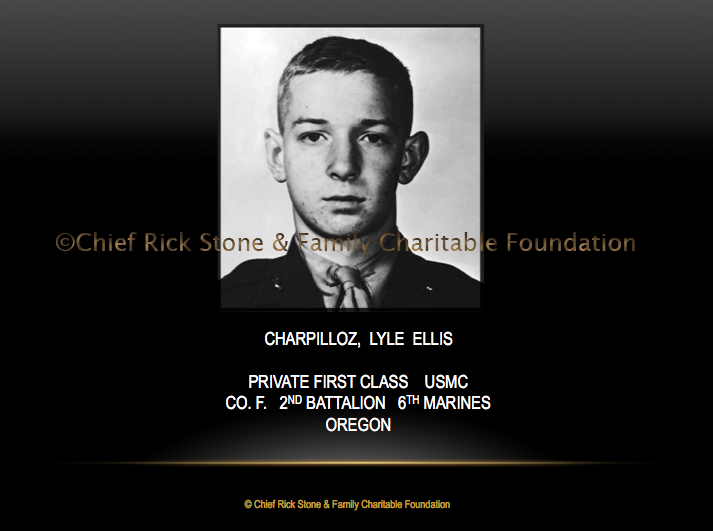
PFC Lyle Ellis Charpilloz
PFC Charpilloz was born in Silverton, Oregon and enlisted in the Marine Corps when he was only 15 years of age. He was a member of F Company, 2nd Battalion, 8th Marines during the invasion of Tarawa on 20 November 1943 when he was killed by gunshot wounds on Red Beach 3. PFC Charpilloz’ body was reportedly buried in a Division Cemetery after the battle but was not officially identified until 4 December 2017.
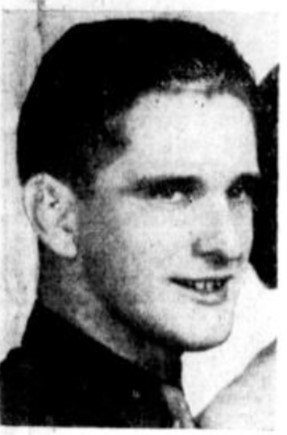
SGT Stewart Clark
Stewart Clark was born in Cleburne, Texas and joined the Texas National Guard just as soon as he graduated from high school in Joshua, Texas in 1940. When his unit was mobilized as the 36th Infantry Division prior to the beginning of World War 2, Stewart became a member of the 132nd Field Artillery and soon promoted to Sergeant. His unit landed near Salerno during the invasion of Italy on 9 September 1943. Four days later, SGT Clark and the members of his howitzer section received an artillery fire mission by radio in support of the infantry’s attack on a hill. After firing one round toward the German positions, SGT Clark dispersed the other members of his gun crew to nearby foxholes while he awaited further radio instructions from an artillery spotter whose job was to correct his fire to strike the enemy positions more accurately. SGT Clark was checking to see that each member of his crew were under cover when an enemy artillery shell landed near him. He was killed instantly by a shell fragment that entered his neck and penetrated to the cervical region. No other members of his crew were injured. For his “gallantry in action”, SGT Clark was posthumously awarded the Silver Star Medal. SGT Clark’s body was recovered and he was ultimately buried at the Fort Sam Houston National Cemetery in San Antonio, Texas where he remains to this day.
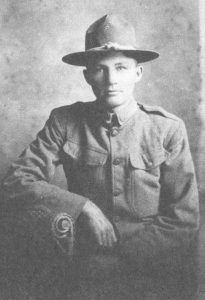
PVT Murphy Joseph Cole
PVT Cole was born in Reeves, Louisiana and enlisted in the U.S. Army on 6 May 1918 after service in the Louisiana National Guard. He was rushed to France as a member of the 156th Infantry Regiment where he was transferred to H Company, 23rd Infantry Regiment, 2nd Division of the American Expeditionary Forces (AEF). PVT Cole had been in his new company for only eleven days when his unit was at the spear point of an Allied attack that became known as the Second Battle of the Marne on 18 July 1918. PVT Cole was reportedly killed by German artillery fire and his body was not recovered and identified after the battle. Foundation researchers believe that PVT Cole may be one of 251 “Unknowns” buried in the Aisne-Marne American Cemetery in Belleau, France.
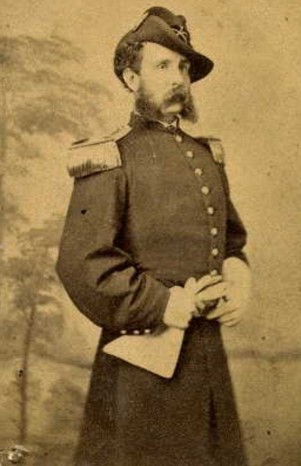
1st Lieutenant William Winer Cooke was the eldest son of Alexander Hardy Cooke and Angeline Augusta Winer. Cooke attended school in Hamilton, Canada and joined the 24th New York Volunteer Cavalry in 1862 at Niagara Falls, New York. He was commissioned a 2nd Lieutenant on January 26, 1864, and 1st Lieutenant on December 14, 1864. Cooke was wounded during the Siege of Petersburg. Mustered out on June 24, 1865, he immediately joined the 1st Provisional New York Volunteer Cavalry and applied for a regular army commission. Cooke was brevetted three times to a Captain, Major and Lt. Colonel in the U.S. Volunteers for his service in three different battles during the Civil War. Upon the reorganization of the Army after the war, Cooke was appointed 2nd Lieutenant, 7th US Cavalry, on July 28, 1866, and promoted to 1st Lieutenant on July 31, 1867 at Fort Harker, Kansas. He served as Regimental Adjutant from January 1, 1871 until his death. He participated in the Washita Campaign of 1868, the 1873 Yellowstone Expedition, and the 1874 Black Hills Expedition. He was nicknamed by irreverent troopers “The Queens Own” but they respected his foot speed in camp races. LT COL George Armstrong Custer habitually misspelled his name but praised his gallantry. He was renowned as the best shot in the regiment with either pistol or carbine and rode a white horse into battle. During the Battle of the Little Big Horn, Cooke wrote the famous “last message”, “Benteen, Come on. Big village. Be quick. Bring packs. PS Bring pacs”. The notebook from which he tore the page from was later found in the possession of a Sioux warrior who used the rest of the pages to draw pictographs. A bank check for $182 endorsed to Cooke by Capt Yates and a small pistol Cooke habitually carried in his pocket with his name on it were later recovered from Indians and forwarded to his family. The battlefield museum contains four foot bones and a cranial fragment that was found near his marker at an unknown date. His body was exhumed and reburied in June 1877 in the Battlefield National Cemetery. He was later exhumed again and reburied in the Hamilton Cemetery, Ontario, Canada.
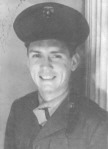
PVT William Franklin Cowart
Private Cowart was born in Reform, Alabama and grew up on a farm with his four brothers and four sisters in rural Alabama. His family and friends called him “Bunk.” After enlisting in the Marine Corps in Jackson, Mississippi in 1942 and completing basic training, Bunk was shipped to New Zealand where he was first trained to operate the 37mm anti-tank gun. In New Zealand, the 20 year old “Bunk” met and married a 17 year old New Zealand girl whose father was also a farmer. Less than two months before the invasion of Tarawa, Private Cowart was transferred to C Company, 2nd Amphibious Tractor Battalion and assigned to drive a Landing Vehicle Tracked (LVT or “Amtrac”) onto Tarawa’s Red Beach 3. His Amtrac stalled while trying to climb a seawall and Private Cowart was killed by gunshot wounds trying to exit the vehicle. Private Cowart’s body was laid in the sand near the damaged vehicle but after the battle he was reported as Missing in Action. He remains in “Unresolved” status to this day.
PFC Cronkhite was born in State Line, Illinois and was wounded during the Guadalcanal campaign. He was a member of A Company, 1st Battalion, 2nd Marines and left behind a fiancée when he left New Zealand to participate in the invasion of Tarawa. On 21 November 1943, he was last seen on Red Beach 2 under heavy enemy fire. PFC Cronkhite was reported as Missing in Action after the battle. He remains in “Unresolved” status to this day.
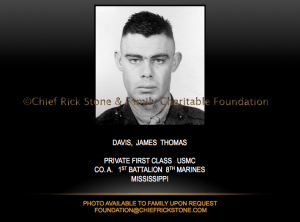
PFC James Thomas Davis
PFC Davis was born in Mississippi and was known as “J.T.” to his family and friends. He was a member of A Company, 1st Battalion, 8th Marines and fought with his unit during the Guadalcanal Campaign before being withdrawn to New Zealand to prepare for the invasion of Tarawa. On 21 November 1943, PFC Davis landed on Red Beach 2 on Tarawa under heavy enemy fire. He was reported as Wounded in Action the next day with a gunshot wound to his hip. PFC Davis was listed as transferred offshore to the USS Doyen on 23 November 1943 for medical treatment but nothing further was ever heard about him or his status. PFC Davis is one of the “Phantoms of Tarawa” and remains “Unaccounted For” to this day.
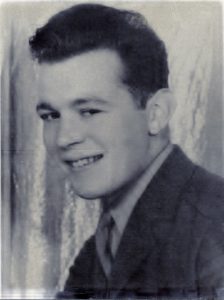
PFC John Cecil DeLellis
PFC DeLellis was born in Waukesha, Wisconsin and was an Eagle Scout and a student at the University of Wisconsin at Madison. He was a member of C Company, 1st Battalion, 2nd Marines during the invasion of Tarawa. On 22 November 1943 PFC DeLellis was killed by gunshot wounds and buried in Cemetery 26 on Tarawa. He remains in “Unaccounted For” status to this day although Foundation investigations show that he was undoubtedly buried as an “Unknown” in the Punchbowl and recovered from there in 2017.
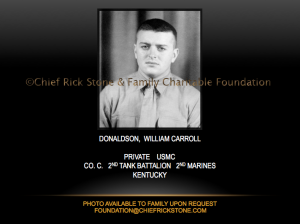
PVT William Carroll Donaldson
Private “Bill” Donaldson was born in Covington, Kentucky and was a star softball pitcher in various leagues around his hometown. Before joining the Marines, Bill worked on the Cincinnati Enquirer newspaper as a police beat and sports reporter. PVT Donaldson was a member of C Company, 2nd Tank Battalion where he served as a mechanic for the M-4 “Sherman” tanks. On 20 November 1943, PVT Donaldson was in a landing craft approaching Tarawa’s Red Beach 1 when it became stranded on the reef hundreds of yards from shore. PVT Donaldson was not seen on Tarawa after his departure from the landing craft and he remains “missing in action” to this day.
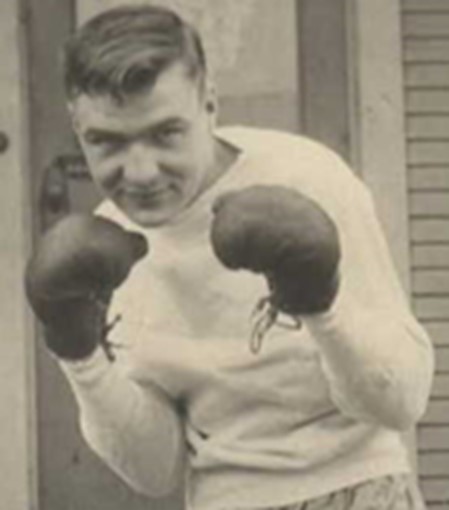
Private First Class William Albert Ellis, Jr.
PFC Ellis was born in Milwaukee, Wisconsin and was an amateur boxer in the lightweight division. He joined the Marine Corps on 4 October 1943 and was designated as an “Automatic Rifleman” in E Company, 2nd Battalion, 7th Marines for the invasion of Okinawa on 1 April 1945. PFC Ellis fought with his company to take Northern Okinawa and then was relocated south for assaults against the ridges guarding the Japanese “Shuri Line.” On Mother’s Day, 13 May 1945, his company began attacking between Dakeshi Ridge and Wana Ridge. PFC Ellis was last observed in a ditch under a barrage of grenade and mortar fire. He was not seen again and was reported Missing in Action on that day. PFC Ellis’ body was not identified after the battle and he officially remains in “Unaccounted For” status.
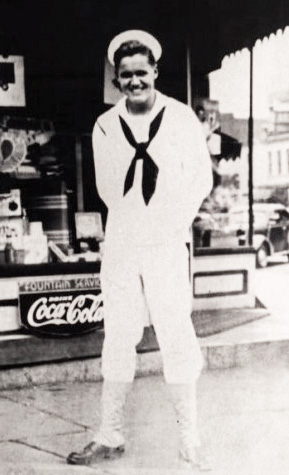
Seaman 1st Class William Friend Emery
S1c Emery was born in Evanston, Illinois and was known as “Bill” to his family and friends. He graduated from New Canaan High School in May 1944 before he enlisted in the U.S. Navy as World War II was rapidly drawing to a close. At the time of his enlistment, S1c Emery was only 18 years of age. After basic training, S1c Emery was assigned to the cruiser USS Indianapolis on 8 May 1945 while it was at Mare Island Navy Shipyard receiving repairs from a Japanese kamikaze attack off Okinawa. While on board the Indy, S1c Emery trained as a Quartermaster assigned to the Navigation Division. He served in this capacity on board the Indianapolis during its high speed voyage to deliver crucial components of the first atomic bomb to Tinian Island. Shortly after the Indy completed this historic mission the ship was torpedoed by Japanese submarine I-58 on 30 July 1945 and S1c Emery lost his life during the sinking. S1c Emery continues to be listed as “Unaccounted For” by the Defense POW/ MIA Accounting Command. He is gone but never forgotten. To be remembered is to live forever.
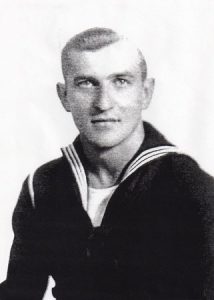
Seaman 1st Class Joseph Fedorchak
S1c Fedorchak was born in Olyphant, Pennsylvania. He joined the Navy in 1942 and volunteered for submarine duty. S1c Fedorchak received a “Motor Machinist Mate” rating and was briefly assigned to the USS Guardfish before transferring to the USS Triton in Brisbane, Australia. S1c Fedorchak was on his first war patrol aboard the USS Triton when it was sunk by a Japanese destroyer on 15 March 1943 while attacking an enemy convoy in the Bismark Sea. S1c Fedorchak and all the crew members of the USS Triton remain on “eternal patrol” and will never be recovered.
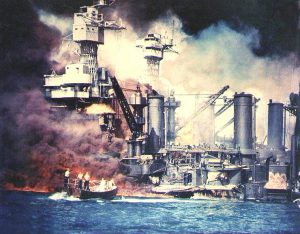
Mess Attendant 2nd Class Jose San Nicolas Flores
PFC Fox was born in Worcester, Massachusetts and was president of his high school class. He earned a “Letter of Commendation” for his service during the Guadalcanal campaign. PFC Fox was a member of K Company, 3rd Battalion, 8th Marines during the invasion of Tarawa. On 20 November 1943, PFC Fox was in a landing craft with his brother George when it was struck by enemy fire. Robert was killed by shrapnel wounds but George survived and was awarded the Silver Star for later heroism on the beach. Robert’s body has yet to be recovered and identified.
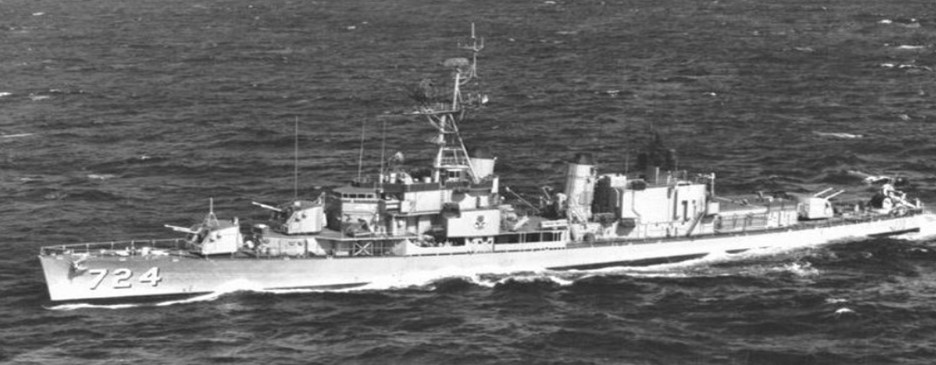
Lieutenant (jg) James William Fravel
“Jimmie” Fravel was born in Vincennes, Indiana where he was a star distance runner on his high school track team. Jimmie enlisted in the Navy in 1934 and served as an enlisted man aboard the submarine USS R-11 and the destroyer USS Hatfield before receiving an officer’s commission to serve aboard the destroyer USS Laffey. On 16 April 1945, the Laffey was struck by a Japanese kamikaze aircraft about 30 miles north of Okinawa. LT Fravel was one of seven members of the the Laffey’s crew who were listed as “Missing in Action.” He was awarded the Silver Star Medal and the Purple Heart Medal for his actions and loss on board the Laffey. In August 2023, LT Fravel’s family requested a comprehensive Family Report from the Foundation which noted that casualties from the Laffey had been buried in several cemeteries on Okinawa. Foundation investigators determined that LT Fravel is a “Possible Match” to multiple “Unknowns” originally buried on Okinawa. To date, LT Fravel’s body has yet to be recovered and identified.
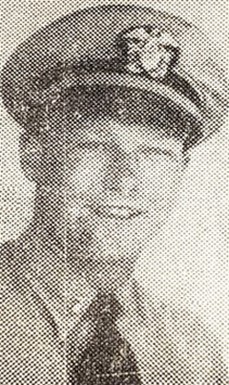
Lieutenant (jg) Glen William Freeman
Glen Freeman was born in Caryville, Tennessee and moved with his family to Carbon, Utah where he attended Carbon Junior College as a member of the Navy’s V-1 program to train pilots. Glen was commissioned an Ensign in the Navy on 21 July 1943 and joined Fighting Squadron VF-24 while flying the F6F Grumman Hellcat fighter. Promoted to Lieutenant Junior Grade, Freeman accumulated over 1,000 hours of combat flying while participating in air battles near Saipan, Guam, New Guinea, the Marshall Islands, Taroa, Kwajlein, Palau, Ulithi, Chichi Jima, the Caroline Islands, the Marianas, and his final campaign during the Battle of Okinawa. On 25 April 1945, LTjg Freeman led a flight of Hellcats from the carrier USS Santee to attack Ishigaki Airfield near Okinawa. He was observed to crash in the water near the airfield. LTjg Freeman was awarded the Distinguished Flying Cross, the Air Medal and the Purple Heart Medal for his actions in the South Pacific. To date, LT Freeman’s body has yet to be recovered and identified. In June 2024, LTjg Freeman’s family requested a comprehensive Family Report from the Foundation and Foundation investigators are awaiting the acquisition of government files to determine if LTjg Freeman is a “Most Likely Match” to multiple “Unknowns” originally buried on Okinawa.
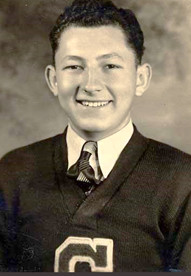
Store Keeper 3rd Class Roberto Stillman Garcia
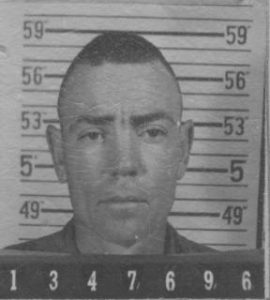
CPL Quinton Jasper Gathright
CPL Gathright was born in Navarro County, Texas and enlisted in the U.S. Army in 1939 at age 18. He was a member of the famed 1st Cavalry Division at a time when they were riding horses while patrolling the Mexican border from Fort Bliss, Texas. His division was shipped to Australia in July 1943 and participated in General MacArthur’s “island hopping” campaign through the Admiralty Islands, including combat on Los Negros and Manus Island. CPL Gathright’s division landed on Leyte Island in October 1944 and participated in the campaign to liberate the Philippines. He may have been briefly captured by the Japanese. CPL Gathright survived the war and passed away in Corsicana, Texas in 1972.
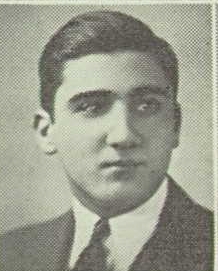
Sergeant Edward Gazel
Sergeant Edward Gazel was a resident of Lincoln Park, Michigan and enlisted in the U.S. Marine Corps in October 1943 at age 22. He was a member of the 2nd Tank Battalion, 2nd Marines. He saw action during the invasion of Tarawa in November 1943 and later battles on Saipan, Tinian, and Okinawa. Along the way, SGT Gazel was awarded the Bronze Star for Valor and once saved his unit by repelling a nighttime Japanese attack by personally manning a .30 caliber machine gun. He later served with the occupation forces in Japan before returning home to Michigan where he married, fathered three daughters and created as prosperous business. Very late in life, SGT Gazel became a very important consultant to the Chief Rick Stone and Family Foundation by providing first hand information on the burial locations of those who remained MIA on Tarawa. You can hear SGT Gazel’s account of helping bury Corporal Claire Goldtrap on Tarawa, which led to his identification as an “Unknown”, in NO HOME FOR HEROES, Episode 9. SGT Gazel passed away in 2022 in Lincoln Park at age 100.
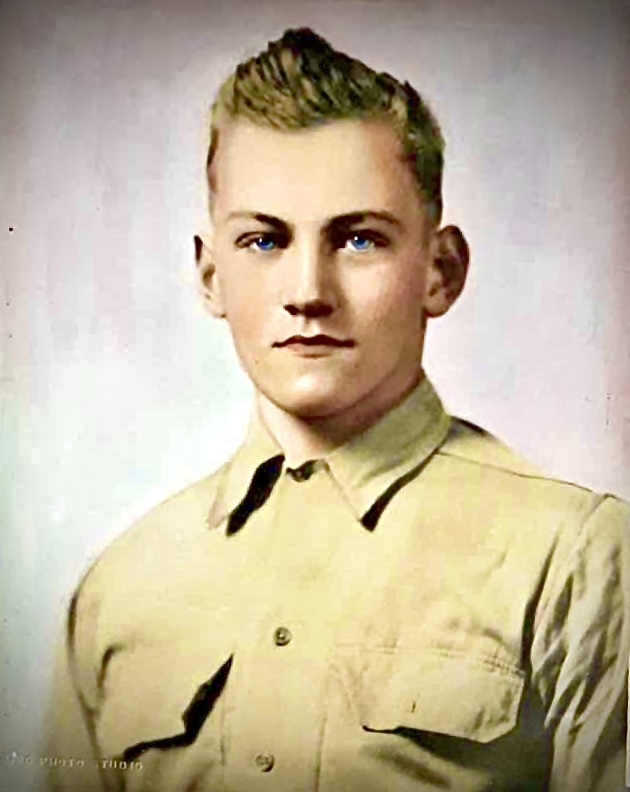
Private Isadore Glowacki
Isadore Glowacki was born in Hancock, Michigan to Peter and Frances Glowacki. He was 18 years old when he was drafted into the Army on 15 September 1944. After training at Fort Hood, Texas, Private Glowacki was transported to Hawaii where he joined A Company, 184th Infantry Division of the 7th Infantry Division (known as the “Hourglass Division). On 1 April 1945, PVT Glowacki and his unit participated in the invasion of Okinawa where he was killed in action a month later. His body was not recovered and he was listed as missing. In November 2024, PVT Glowacki’s family requested a comprehensive Family Report from the Foundation. Foundation investigators determined that PVT Glowacki is a “Best Match” beyond a reasonable doubt to only one “Unknown” originally buried on Okinawa. The “unknown” believed to be PVT Glowacki is now interred in the Manila American Cemetery in the Philippines. To date, PVT Glowacki’s body has yet to be identified.
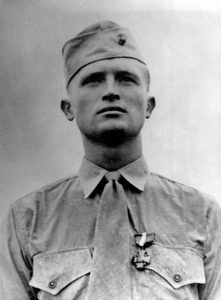
SGT Edward Russell Godwin
SGT Godwin was from Smithdale, Mississippi and a member of E Company, 2nd Battalion, 2nd Marines during the invasion of Tarawa on 20 November 1943. He took over for a seriously wounded platoon leader and led his company in repelling repeated enemy attacks against their exposed position over the course of several days. For his actions, SGT Godwin was awarded the Navy Cross. SGT Godwin survived the war and passed away in California in 1980.
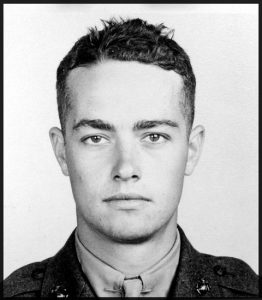
SGT Harold Hammett
SGT Hammett was born in Avery, Mississippi and a member of B Company, 1st Battalion, 2nd Marines when he was last seen embarking from his amphibious tractor on Tarawa’s Red Beach 2 on 20 November 1943 under heavy enemy fire. SGT Hammett was not seen again and was reported Missing in Action on that day. SGT Hammett’s body was not identified after the battle. On 9 February 2024, the Department of Defense announced that the Armed Forces DNA Identification Laboratory had identified SGT Hammett and a Punchbowl “Unknown.”
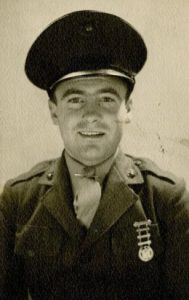
PFC Harold Patrick Hannon
PFC Hannon was born in Scranton, Pennsylvania and was known as “Tidley” to his family and friends. On the morning of 20 November 1943, he was a member of E Company, 2nd Battalion, 8th Marines when the amphibious tractor in which he as riding penetrated farther inland from Tarawa’s Red Beach 3 than other Marines. His unit was temporarily cut off and PFC Hannon was killed by a gunshot wound. PFC Hannon was buried at an unrecorded location on Tarawa where his remains were finally found, identified, and returned home to his family in Pennsylvania in 2017.
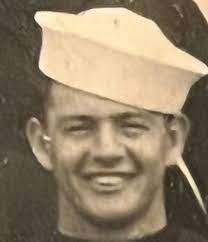
Pharmacist Mate 2nd Class Merle Chester Joseph Hillman was born in Chicopee, Massachusetts and grew up with his grandparents before joining the Navy in 1937. He boarded the USS California as a member of the battleship’s crew on 225 October 1939 and was on board the California when the Japanese attacked Pearl Harbor on 7 December 1941. After the attack PhM2c Hillman’s body could not be identified and he was listed as “Missing in Action” (MIA). While at the Department of Defense in on 7 December 2011, Chief Rick Stone prepared reports on all of the California’s MIA’s. PhM2c Hillman was listed as a Most Likely Match to only two California “Unknowns” buried the Punchbowl Cemetery in Honolulu. Foundation researchers, using advanced law enforcement investigative techniques and sophisticated technologies not available at the Department of Defense, continued to research PhM2c Hillman’s case which narrowed the list of Most Likely Matches to just one “Best Match.” In 2018, after over six years, the Department of Defense finally decided to act on Chief Stone recommendations and began disinterring all of the USS California Unknowns. PhM2c Hillman was recovered from the grave site in the Punchbowl Cemetery indicated by Chief Stone’s research in 2011. PhM2c Hillman was identified on 3 November 2023 and finally returned home to his family for burial in Chicopee, Massachusetts in January 2024.
PhM2c Hillman’s hometown newspaper article about his recovery and identification:
https://www.gazettenet.com/HolyokeVetRemains-hg-01232024-53800230
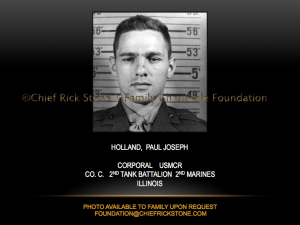
CPL Holland was born in Calumet, Michigan but his family later moved to Rock Island, Illinois where he worked as a movie usher and later at the International Harvester Company. Paul enlisted in the Marine Corps Reserves on 21 August 1942 and trained as a tank mechanic. On the morning of 20 November 1943, he was a member of C Company, 2nd Tank Battalion, 2nd Marines. CPL Holland was designated to serve as a recon guide during the assault. His role was to lead a platoon of tanks ashore using floats to mark a clear path around obstacles like shell holes or mines. During the attack, CPL Holland was killed by a gunshot wound to the chest. He was buried at an unrecorded location on Tarawa. Unfortunately CPL Holland has never been officially identified and he remains in “Unaccounted For” status to this day.
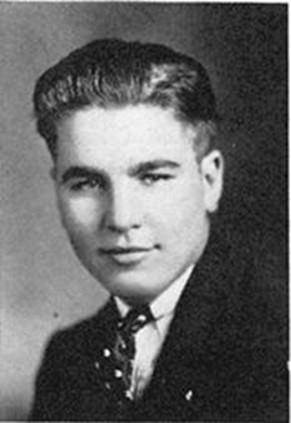
Seaman 1st Class Paul Elston Holley
Seaman 1st Class Paul Elston Holley was born in St. Aubert, Missouri and grew up in North Platte, Nebraska where he was known as “Buck” to his family and friends. Buck and his brother, Errette, both joined the Navy in 1938. They both boarded the USS California as members of the battleship’s crew on 21 October 1938 and both were on board the California when the Japanese attacked Pearl Harbor on 7 December 1941. After the attack S1c Holley’s body could not be identified and he was listed as “Missing in Action” (MIA). His brother was wounded but survived the attack. While at the Department of Defense in January 2012, Chief Rick Stone prepared reports on all of the California’s MIA’s. S1c Holley was listed as a Most Likely Match to nine USS California “Unknowns” buried the Punchbowl Cemetery in Honolulu. Foundation researchers, using advanced law enforcement investigative techniques and sophisticated technologies not available at the Department of Defense, continued to research S1c Holley’s case which narrowed the list of Most Likely Matches to five “Best Match” candidates. In 2017, after over five years, the Department of Defense finally decided to act on Chief Stone recommendations and began disinterring all of the USS California Unknowns. S1c Holley’s family contacted the Chief Rick Stone and Family Charitable Foundation on February 25, 2022 and a comprehensive Family Report was immediately provided on the status of his case.
S1c Holley has yet to be identified by the Defense POW/MIA Accounting Command.
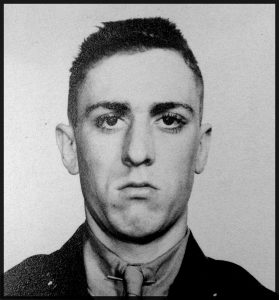
SGT James Joseph Hubert
SGT Hubert was born in Duluth, Minnesota and a former member of the U.S. Navy before joining the Marine Corps in 1940. He saw action during the Guadalcanal Campaign and was a member of H Company, 2nd Battalion, 8th Marines when he was killed by a gunshot wound on Tarawa’s Red Beach 3 on 21 November 1943. SGT Hubert’s body was identified and buried in a nearby cemetery that was lost after the battle and not found until 2015. SGT Hubert was finally identified in 2016 and returned home to his family.
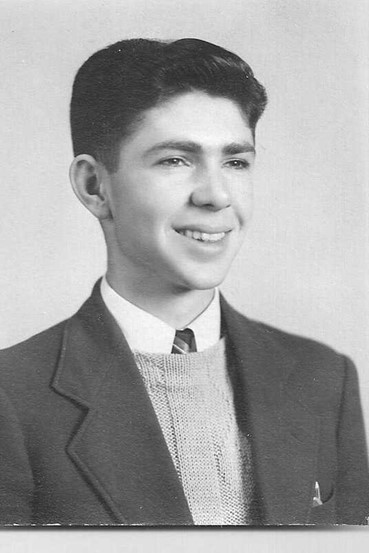
Fire Control Operator 3rd Class Leon Orlando Hudson
FCO3c Leon Orlando Hudson was born in Wilder, Idaho and attended Wilder High School where he played roles in plays presented by the school drama department. Soon after high school, he was inducted in the U.S. Navy on 11 March 1943 and received specialized training as a Fire Controlman. On 19 November 1943, FCO3c Hudson boarded the destroyer escort, USS Whitehurst, DE-634.Taking up station off Okinawa on 12 April 1945, a low-flying enemy plane closed the ship only to be driven off by Whitehurst’s gunfire. At 1430 hours, four Japanese dive-bombers approached the area from the south; and one detached itself from the group and headed for Whitehurst. It circled and soon commenced a steep dive while two of its companions also commenced an attack, one from the starboard beam and one from astern. The latter two planes spun down in flames, destroyed by antiaircraft fire, but one crashed into the ship’s forward superstructure on the port side of the pilot house, penetrating bulkheads and starting fires that enveloped the entire bridge. The Whitehurst listed six missing sailors, including FCO3c Hudson, and soon buried its dead in the Zamami Cemetery on Okinawa. Foundation investigators determined in 2024 that one of the “Unknowns” originally buried in Zamami Cemetery is a “Most Likely Match” to be FCO3c Hudson.
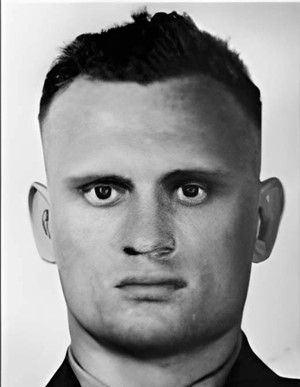
Private First Class Orville Allen Hutchison
PFC Hutchison was an usher in a local theater in Brookfield, Missouri when the eighteen-year-old signed up for a four-year hitch as a member of K Company, 3rd Battalion, 8th Marines. PFC Hutchison survived the Battle of Guadalcanal but lost his life on Tarawa on 21 November 1943. After the battle, his body could not be identified and he was officially listed as “Missing in Action” (MIA). While at the Department of Defense in 2011/2012, retired Police Chief Rick Stone prepared investigative reports on all of Tarawa’s MIAs using the Random Incident Statistical Correlation (RISC) System, which he had created as a member of the Dallas Police Department. During his investigation, Chief Stone discovered that PFC Hutchison’s dog tags were found in 1963 near where eight “Unknowns” had been recovered and buried in a common grave in the Punchbowl Cemetery in Honolulu. In 2020 and 2022, PFC Hutchison’s family contacted the Chief Rick Stone and Family Charitable Foundation for a comprehensive “Family Report” on his case. Foundation investigators cited the common grave in the Punchbowl and recommended the family submit a DNA sample. The Foundation also offered the report to the Defense POW/MIA Accounting Agency. PFC Hutchison was recovered from the site in the Punchbowl Cemetery indicated by Chief Stone’s original research in 2011 and identified by the Armed Forces DNA Identification Laboratory. PFC Hutchison was buried in Brookfield, Missouri on 9 September 2024.
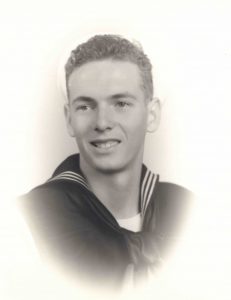
Seaman 1st Class Carl Spencer Johnson
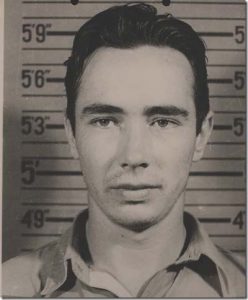
Pharmacist Mate 1st Class Fred Eugene Kathan
PhM1c Kathan was born in Denver, Colorado and was attached as a Medical Corpsman to the 1st Battalion, 6th Marines when the amphibious tractor in which he was riding struck an anti-boat mine just off Tarawa’s Green Beach on the evening of 21 November 1943. PhM1c Kathan’s body was recovered after the battle and buried somewhere on Tarawa. Unfortunately PhM1c Kathan has never been officially identified and he remains in “Unresolved” status.
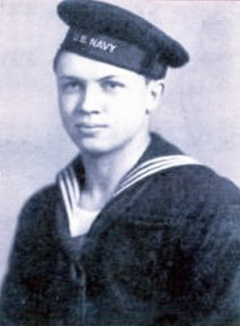
Seaman 2nd Class Albert Raymond Kelly
S2c Kelly was born in Saint Clairsville, Ohio and worked in a meat market while attending high school in Cleveland. Albert decided to enlist in the Navy just before he was due to graduate from West Technical High School, where he played baseball and basketball. Albert enlisted in the U.S. Navy Reserves in Cleveland, Ohio on 11 February 1944 and was given the rank of Apprentice Seaman (AS). After basic training he was promoted to Seaman 2nd Class and assigned to the cruiser USS Indianapolis on 7 May 1944. Designated as a “Radio Striker”, meaning he was in training for the rate of “Radioman.” S2c Kelly participated as an Indy crew member in operations against Tokyo in February 1945, Iwo Jima in February 1945, Ryukyu Islands in March 1945 and Okinawa in March/April 1945. He served continuously on board until the ship was torpedoed by Japanese submarine I-58 on 30 July 1945. A Foundation investigation determined that the body of S2c Kelly was recovered and identified on 6 August 1945 before he was given a “Burial at Sea.” Despite his burial, S2c Kelly continued to be listed as “Unaccounted For” by the Defense POW/ MIA Accounting Command. The Foundation provided documentary evidence of his official burial at sea to the U.S. Navy in May 2021 and S2c Kelly was officially removed from the “Unaccounted For” list by the Navy on 27 May 2022.

1st Sergeant Michael Kenney
Michael Kenney was born in Galway, Ireland. The son of Bernard and Margaret Kenney, Michael had gray eyes, brown hair, a fair complexion and was 5’ 7 1/4” tall. Michael immigrated to America where he joined two older married sisters. Michael enlisted in the U.S. Army on 15 January 1867 when he joined the 5th Artillery Regiment. He was on his third enlistment when he joined the 7th Cavalry at Fort Abraham Lincoln in the Dakota Territory. When Lieutenant Colonel George Armstrong Custer led his men into the Battle of the Little Bighorn on 25 June 1876, 1st SGT Kenney was the standard bearer for F Company. All 210 men of Custer’s command were killed in action, including 1st SGT Kenney. In 2024, the Foundation provided a comprehensive “Family Report”, as requested, to 1st SGT Kenney’s family. Based on this investigation, Foundation researchers believe that 1st SGT Kenney probably fell near what is now labeled Marker Number 87 on Last Stand Hill just a few feet from LT COL Custer. 1st SGT Kenney was ultimately buried as an “Unknown” at the base of the Little Bighorn Battlefield National Monument.
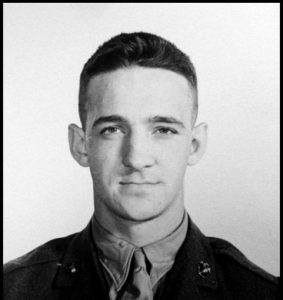
1st Sergeant Michael Paul Konz
1st SGT Konz was born in Milwaukee, Wisconsin. He enlisted in the Marines in 1938 and saw service in Haiti, the Virgin Islands, Cuba, Panama, and American Samoa before being shipped to the South Pacific. 1st SGT Konz was a member of K Company, 3rd Battalion, 8th Marines when he landed on Tarawa on 20 November 1943. He was wounded during the assault and died the next day. 1st Konz’ body was buried in an unrecorded location on Tarawa and he has yet to be identified. His case remains “Unresolved”.
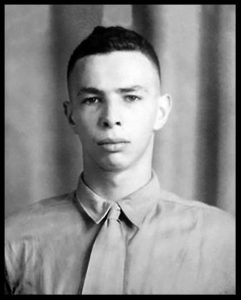
Private First Class Leonard Elias Kristal
PFC Leonard Kristal was born in Brooklyn, New York . In 1942, Leonard begged his parents to sign his enlistment papers since he was only 17, still too young to be drafted, because his two older brothers were already in the service. They finally gave in and signed. Leonard joined the Marines and was trained as a mortar crew member. He was sent to American Samoa and later New Zealand. PFC Kristal was a member of Weapons Company, 2nd Marines when he landed on Tarawa on 20 November 1943. He was killed in action the next day and his body was recorded as buried in two specific locations on Tarawa. Sadly, PFC Kristal has yet to be identified from any recovered remains. His case remains “Unresolved.”
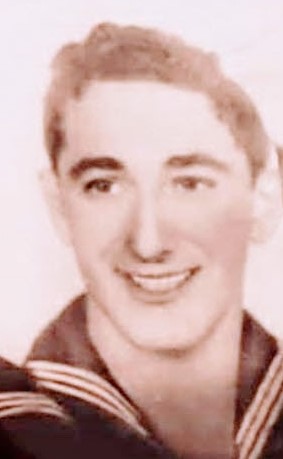
Water Tender 3rd Class Vincent LaSelva
Vincent LaSelva was born in Pelham, New York where he father was a shoemaker. Vincent entered the Navy on 14 April 1943 and served as an enlisted man aboard the destroyer escort, USS Witter. Vincent was a “plank owner” on the Witter as he was a member of the crew when the ship was originally commissioned. Vincent saw a great deal of combat action on Witter in the Pacific including the invasion of the Philippine Islands. On 6 April 1945, the Witter was struck by a Japanese kamikaze aircraft while at sea southeast of Okinawa. WT3c LaSelva was one of six members of the the Witter’s crew who were listed as “Killed in Action.” He was awarded the Purple Heart Medal for his loss on board the Witter. In June 2024, WT3c LaSelva’s family requested a comprehensive Family Report from the Foundation. The investigation discovered that other casualties from the Witter had been buried in the Zamami Shima Cemetery on Okinawa. Foundation investigators determined that WT3c LaSelva is a “Best Match” to only one “Unknown” originally buried on Zamami Shima. To date, WT3c LaSelva’s body has yet to be identified.
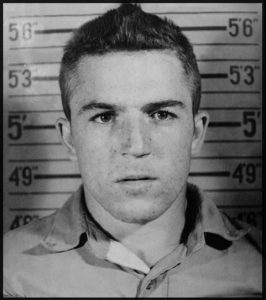
Private First Class Morris Benjamin Laycock
PFC Morris Laycock was born in Arlington, Virginia and was known as “Benny” to his family and friends. His mother died when Benny was not yet four years old and his father was a butcher for a meat market. Times were tough for his family but Benny was able to get a federal job with the Works Progress Administration in 1941 that paid $27 per week. Benny joined the Marines in 1942 and was trained as a barrage balloon crew member. He asked that 100% of his base pay be sent home to his father. PFC Laycock was transferred K Company, 3rd Battalion, 8th Marines as a rifleman and attempted to land on Tarawa on 20 November 1943. It is likely that his landing craft was struck by Japanese artillery fire before reaching the beach and PFC Laycock was reported “Missing.” Sadly, he remains “Unaccounted For” to this day.
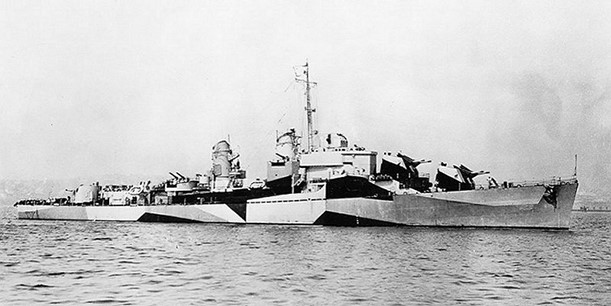
Seaman 2nd Class Franklin Juel Madison
S2c Frank Madison was born in Rice, Minnesota to Frank Julius Madison and Helen Bertha Pitts Madison. Frank’s father was an undertaker who died when Frank was only four years old. Frank enlisted in the U.S. Navy Reserves in Minneapolis, Minnesota on 29 December 1943. After basic training, Frank was promoted to Seaman 2nd Class and was soon assigned to the newly commissioned Destroyer/Minelayer USS Lindsey on 20 August 1944. As a member of the commissioning crew, S2c Madison was known as a “Plank Owner.” On the afternoon of 12 April 1945, S2c Madison’s ship was attacked by Japanese kamikaze aircraft off the west coast of Okinawa. One of the attacking aircraft striking the ship blew about 60 feet off the ship’s bow and S2c Madison was listed as “Missing in Action.” He continues to be listed as “Unaccounted For” by the Department of Defense but Foundation research currently lists him as a “Most Likely Match” to three casualties buried as “Unknowns” on Okinawa after the attack.
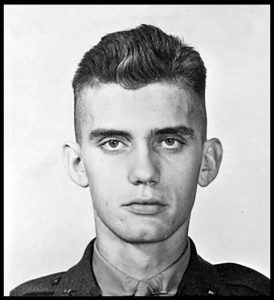
SGT Sam Williams McAllister, Jr.
SGT McAllister was born in San Antonio, Texas and had a paper route before joining the Marine Corps nine days after the Japanese attack on Pearl Harbor in 1941. Sam saw action during the Guadalcanal Campaign and was a member of I Company, 3rd Battalion, 2nd Marines when he was wounded in the side while leading his company mates while attacking inland from Tarawa’s Red Beach 1 on 20 November 1943. SGT McAllister was last seen with a fellow wounded Marine on the beach awaiting evacuation to an offshore transport ship for medical treatment. A month later, SGT McAllister was recorded as being in a U.S. Naval Hospital but was never seen again. He is one of 21 Marines from the battle who are known as the “Lost Phantoms of Tarawa” after vanishing during treatment . SGT McAllister has yet to be identified from any recovered remains. His case remains “Unresolved.”
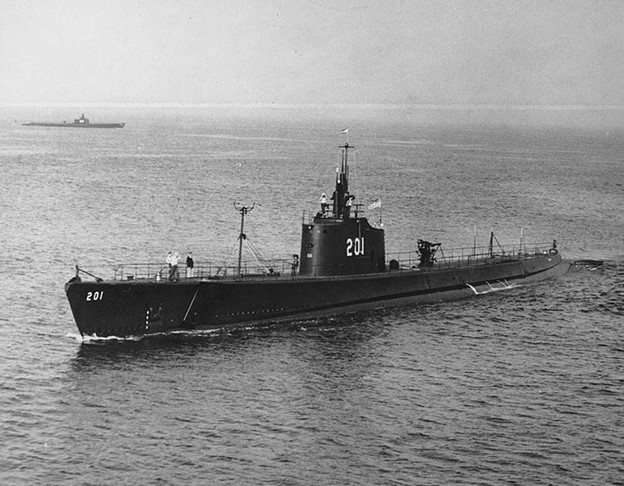
Mess Attendant 1st Class Herman Thurmon McCalop
MAtt1c McCalop was born in Warsaw, North Carolina to Walter Levi McCalop and Susan Herring Brinson McCalop. Herman enlisted in the U.S. Navy in Raleigh, North Carolina on 25 October 1939 and was given the rank of Mess Attendant 3rd Class (MAtt3c). His initial Navy training was at Norfolk, Virginia. After basic training, Herman was assigned to the converted seaplane tender, USS Wright, at Pearl Harbor, Hawaii. He later served aboard the USS Fulton, a submarine tender, where he was promoted to Mess Attendant 1st Class. MAtt1c McCalop was transferred to the submarine, USS Triton, on 10 February 1943 just in time for the Triton’s 6th and final war patrol. On 15 March 1943, the Triton radioed that she was chasing a Japanese convoy that was protected by escorts between Rabaul and the Shortland Islands. Nothing was ever heard from Triton again and she was presumed lost. MAtt1c McCalop and 73 crewmates from the Triton continue to be listed as “Unaccounted For” by the Department of Defense. The wreckage of the Triton has never been found.

Private Archibald Floyd McIlhargey
Private McIlhargey was born in County Antrim, Ireland in 1845 but soon his family immigrated to Canada. He enlisted in the U.S. Army in New York City in 1867 and was assigned to I Company, 7th Cavalry. Private McIlhargey joined the 7th at Fort Leavenworth, Kansas and participated in the Battle of Washita River. He often assumed duties as the company cook while accompanying the 7th on assignments in Kentucky, Oklahoma, Montana, and South Dakota. Private McIlhargey was a member of I Company, known as the “Wild I” for its often unruly behavior, when Lieutenant Colonel George Armstrong Custer led the 7th Cavalry to a rendezvous with history along the Little Big Horn River in Montana Territory on 25 June 1876. Private McIlhargey served as a courier between Major Marcus Reno and LT COL Custer early in the battle. After the fight, there were no survivors among the 210 members of LT COL Custer’s command. Foundation investigators believe that Private McIlhargey died within a few feet of LT COL Custer on Last Stand Hill and was probably originally buried at what is now Marker Number 66 just below the monument on the battlefield.
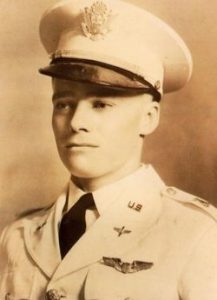
Captain Joseph Potter McLaughlin
Captain McLaughlin graduated from Missoula High School in Missoula, Montana in June 1935. He entered Montana State University and completed three years of college before enlisting in the U.S. Army Air Corps Reserves on 8 November 1939. Captain McLaughlin fought in the aerial defense of the Philippines Islands against Japanese assaults before being withdrawn to Victoria, Australia where he was assigned as a “test pilot” to test new or repaired aircraft as they were assembled in Australia and before they were released for combat operations. On 5 March 1942, Captain McLaughlin was assigned to a “special mission” to fly from Laverton Field (Repair Depot) southwest of Melbourne, Australia, to Canberra, Australia. LT McLaughlin was piloting a P-40E “Kittyhawk” fighter. LT McLaughlin was not seen or heard from again and he was listed as “Missing in Action”. In accordance with then existing federal law, LT McLaughlin’s status was changed to “Killed in Action” on 19 March 1943. In 2004, a search team recovered personal items from a World War II crash site in Australia which were associated with Captain McLaughlin. In a questionable case of identification by the Joint POW/MIA Accounting Command (JPAC) Laboratory, Captain Joseph McLaughlin was officially “resolved” and his alleged remains were transferred to the Arlington National Cemetery where they were buried on 10 April 2006 in Section 60, Site 749.
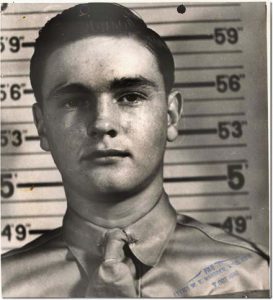
CPL John Vincent McNichol
CPL McNichol was born in Renovo, Pennsylvania and a former Boy Scout before joining the Marine Corps in 1941. John had just completed the 8th grade when he signed up and was probably only 16 years old. He saw action during the Guadalcanal Campaign and was a member of E Company, 2nd Battalion, 8th Marines when he was killed by gunshot wounds on Tarawa’s Red Beach 3 on 21 November 1943. CPL McNichol’s body was identified and buried in a trench that was lost after the battle and not found until 2017. CPL McNichol has been identified and will be returned home to his family for burial in Arlington National Cemetery.
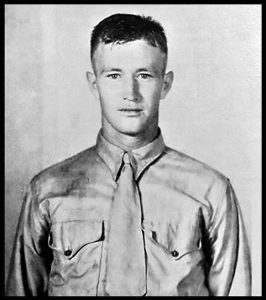
SGT Clyde Clayton Mitchell
SGT Mitchell was born in Cloud Chief, Oklahoma as the son of an Oklahoma State Highway Patrolman. He joined the Marine Corps in 1939 and saw service in the Panama Canal Zone and on board a destroyer. SGT Mitchell was a member of L Company, 3rd Battalion, 8th Marines when he landed on Tarawa’s Red Beach 3 on 20 November 1943. He was killed by a gunshot wound on the first day of battle. SGT Mitchell’s body was buried in Cemetery 28 and the Foundation discovered a photograph of his grave marker taken after the battle and a map with the location of Cemetery 28 on Tarawa. However, SGT Mitchell has yet to be recovered and identified and he remains officially classified as “Unaccounted For”.
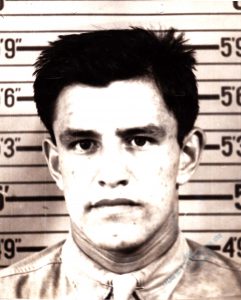
PFC Francis John Monick
PFC Monick was an Iroquois Indian born in Brasher Falls, New York. His parents died when he was 13 and he was a ward in an orphanage. PFC Monick was a member of B Company, 1st Battalion, 8th Marines when he landed on Tarawa on 20 November 1943. He was struck in the left thigh by a gunshot wound and died later that day. PFC Monick’s body was buried in a Divisional Cemetery and was undoubtedly an “Unknown” buried in Punchbowl; however, he has yet to be identified and remains “Unresolved”.
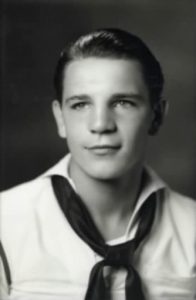
S1c Earl Leroy Morrison
Seaman First Class Morrison was 20 year old sailor from Montana assigned to the battleship USS Arizona on the morning of Sunday, December 7, 1941. The surprise Japanese attack left his ship a shattered, sunk hulk and 1,177 crew members dead or missing, most of them entombed forever inside the battleship. Among the missing was Seaman Morrison. On 25 April 2012, Chief Stone, while a member of the Department of Defense, investigated Seaman Morrison’s case and determined that he was the only “Most Likely Match” to Halawa Unknown X-51, buried in the Punchbowl Cemetery. On 3 August 2013, Seaman Morrison’s family requested a “Family Report” from the Foundation regarding his case, which confirmed Chief Stone’s previous assessment. Despite Chief Stone’s official recommendation for the forensic identification of Unknown X-51 in 2012 and a subsequent NBC News investigative report in 2013, Seaman Earl Leroy Morrison continues to remain buried as an “Unknown” in Section Q, Grave Number 1147 at the National Memorial Cemetery of the Pacific (Punchbowl).
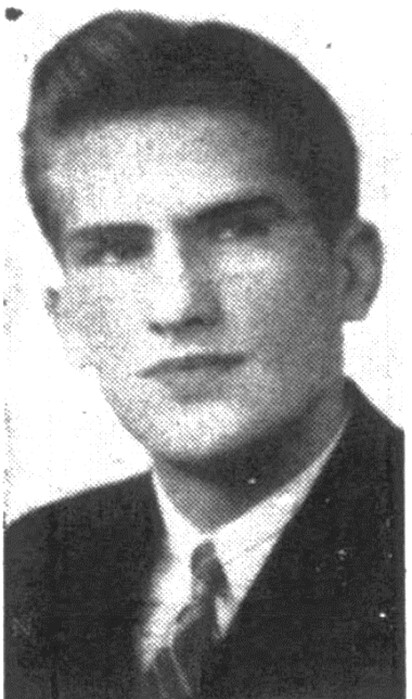
Pharmacist Mate 2nd Class Robert Hugh Moyle
PhM2c Moyle was born in Erie, New York and was attending Canisius College and Cornell University preparing for a medical career when he joined the U.S. Navy Reserves on 15 October 1942. He was soon trained as a combat “Corpsman” and assigned to the Marine Corps. As a member of F Company, 2nd Battalion, 4th Marine Regiment, 6th Marine Division, PhM2c Moyle was with his unit when it launched patrols into Naha, Okinawa. He spent his 23rd birthday on 24 May 1945 at a muddy aid station near the front lines. Just three days later, a fellow company mate wrote that PhM2c Moyle ran to the aid of a wounded man on the battlefield and was killed by a gunshot wound to the chest. PhM2c Moyle’s body was not identified after the battle and he was listed as “Missing in Action.” In February 2024, PhM2c Moyle’s family requested that the Foundation investigate his case. Foundation investigators believe they have definitively identified PhM2c Moyle as an “Unknown” buried in the Punchbowl Cemetery in Honolulu, Hawaii. “Greater love hath no man than this, that a man lay down his life for his friends.”
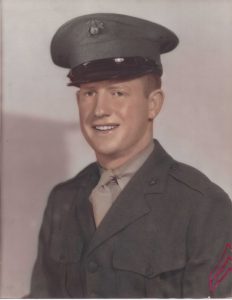
PLSGT Basil Norman, Jr.
Platoon Sergeant Basil Norman, Jr. was born in San Francisco, California. After enlisting in the Marine Corps in August 1941, “Buster” (as he was known to his family and friends) rose quickly through the ranks and fought during the Guadalcanal Campaign as a member of K Company, 3rd Battalion, 2nd Marines. PLSGT Norman landed in the first wave at Red Beach 1 on Tarawa on 20 November 1943 . He and his unit were the first U.S. Marines to land on Tarawa. PLSGT Norman’s Silver Star citation records his fate: “With utter disregard for his own personal safety, he advanced on the enemy weapon in the face of intense rifle fire and, reaching grenade range, quickly silenced the Japanese gun. Boldly continuing his attack on the enemy, he was killed by a Japanese sniper while neutralizing a hostile machine-gun nest.” PLGST Norman’s body was buried in Cemetery 18 on Tarawa with three other Marines. None of these four have ever been identified. At the present time, PLSGT Norman is a “Most Likely Match” to several “Unknowns” previously buried in Punchbowl; however, he has yet to be identified and remains “Unresolved”.
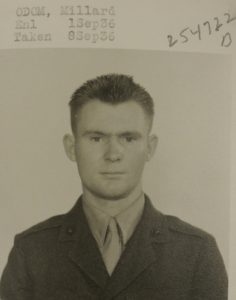
SGT Millard Odom
SGT Odom was born in Batesville, Arkansas. His father died two years after his birth and his mother remarried. SGT Odom joined the Marine Corps in 1936 and served on the battleships USS Mississippi and USS New Mexico. SGT Odom was a member of K Company, 3rd Battalion, 2nd Marines when he landed on Tarawa on 20 November 1943. He was struck in the left side and neck by a gunshot wounds and died instantly behind the seawall on Red Beach 1. SGT Odom’s body was listed in his military records as buried in Cemetery 33 on Tarawa but in 2011 Chief Stone, while a member of the Department of Defense, identified SGT Odom as a “Most Likely Match” to Unknown X-273 which had been recovered from Cemetery 11 and not Cemetery 33. In September 2018, SGT Odom was officially identified as Unknown X-273 and he was returned home to his family in California for burial.
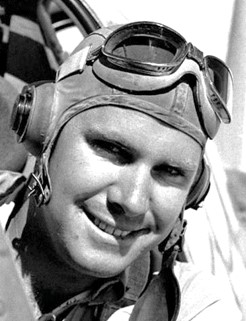
Captain Donald Cook Owen
Captain Owen was born in Imperial, California and attended San Diego State College. He joined the U.S. Navy Reserves in 1941 and completed flight training at Corpus Christi, Texas before accepting a commission in the U.S. Marine Corps. Captain Owen fought in the Guadalcanal Campaign and gained recognition as an “Ace” by shooting down five Japanese planes. As a member of the famed VMF-112 “Wolf Pack”, Captain Owen and his squadron joined the flight contingent aboard the carrier USS Bennington in 1945. Captain Owen was flying a F4u “Corsair” fighter on 26 May 1945 as a member of the Combat Air Patrol over the Bennington and the USS Hornet southeast of Okinawa. Rain and low clouds closed in over the carriers before Captain Owen could return safely to the Bennington. He was last seen descending out of the clouds at only 250 feet before crashing into the ocean. No sign of Captain Owen was found and he remains “Missing in Action” to this day. For his service and his sacrifice, Captain Owen was awarded the Distinguished Flying Cross with two Gold Stars and the Air Medal with three Gold Stars.
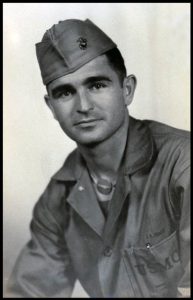
PVT Jewel Raymond Peace
PVT Peace was born in Louann, Arkansas and attended Texas A&M University. He joined the U.S. Marine Corps in 1944 and completed basic training at Parris Island, South Carolina. PVT Peace was shipped to the Pacific and assigned to a reserve unit for the invasion of Iwo Jima. PVT Peace was accepted to the Marine Corps Officer Candidate School at Quantico, Virginia and was assigned there when the war ended. He died in Round Rock, Texas at age 91.
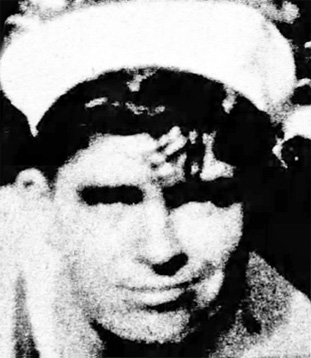
Radioman 3rd Class John Wallace Pence
RM3c John Wallace Pence was born in LeMoy, Iowa to Clarence and Nellie Pence. John enlisted in the U.S. Navy in Des Moines, Iowa on 8 March 1939 and was given the rank of Apprentice Seaman (AS). His initial Navy training was at Great Lakes, Illinois. After basic training, John was assigned to the destroyer/minelayer USS Tracy at Pearl Harbor, Hawaii. He trained as a Radioman and was soon promoted to Radioman 3rd Class. When the Japanese attacked Pearl Harbor on December 7, 1941, RM3c Pence and 14 other men from the Tracy were sent to the USS Pennsylvania to assist in fighting fires and defending the battleship. During the attack, RM3c Pence was killed by a bomb explosion while setting fuses for the Pennsylvania’s anti-aircraft batteries. He continues to be listed as “Unaccounted For” by the Defense POW/ MIA Accounting Command. In 2022, the Foundation provided a comprehensive “Family Report” as requested by RM3c Pence’s family. Based on this investigation, Foundation researchers believe that RM3c Pence is a Most Likely Match to one “Unknown” currently buried in the Punchbowl Cemetery in Honolulu, Hawaii.
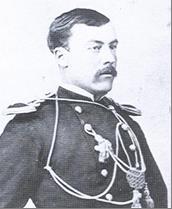
1st Lieutenant James Ezekiel Porter
James Ezekiel Porter was born in Strong, Maine to Jeremy and Rachel Porter. He was appointed to the United States Military Academy at West Point in 1864. Cadet Porter was the first candidate from New England and only the second candidate in the United States to be appointed by competitive examination. New 2nd Lieutenant Porter graduated on 15 June 1869 with a ranking of 16th in a class of 39 cadets. LT Porter joined the famed 7th Cavalry in 1869 and was promoted to 1st Lieutenant in 1872. He was second in command of I Company, 7th Cavalry when Lieutenant Colonel George Armstrong Custer led his men into the Battle of the Little Bighorn on 25 June 1875. All 210 men of Custer’s command were killed in action, including 1st LT Porter. In 2023, the Foundation provided a comprehensive “Family Report”, as requested, to 1st LT Porter’s family. Based on this investigation, Foundation researchers believe that 1st LT Porter fell near what is now labeled Marker Number 207 on the battlefield and was ultimately buried as an “Unknown” at the base of the Little Bighorn Battlefield National Monument.
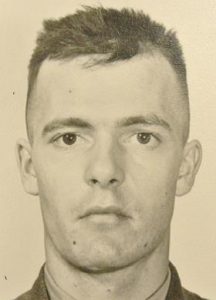
PFC Glenn Edward Powell
PFC Powell was born in Manhattan, Kansas and graduated from high school there before following his father in the plumbing trade. He was soon married but joined the U.S. Marine Corps in February 1942 and completed basic training at San Diego, California. PFC Powell was shipped to the Pacific and participated in the Guadalcanal Campaign. As a member of I Company, 3rd Battalion, 2nd Marines, PFC Powell attempted to land with his unit on Tarawa’s Red Beach 1 near the “Bird’s Beak” on the morning of 20 November 1943. He then vanished into history and his remains have never been found and identified. PFC Powell remains officially in “Unresolved” status.
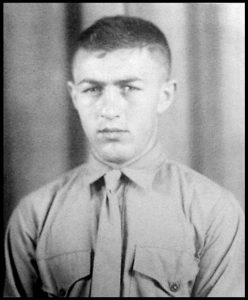
PVT Emil Francesco Ragucci
PVT Ragucci was born in Philadelphia, Pennsylvania as one of eleven children. Emil was a member of E Company, 2nd Battalion, 2nd Marines when he landed on Tarawa on 20 November 1943. He was 19 years old when he was killed by a gunshot wound and fell back into a crater where his LVT landing craft had become disabled. His remains were not found until 2013 and he was finally identified in 2017. PVT Ragucci was returned home for burial in his family plot in 2018.
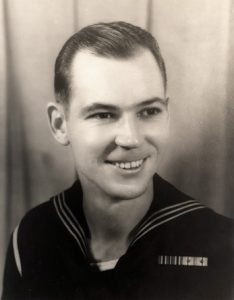
Store Keeper 3rd Class Alvin Wilder Rahn
SK3c Rahn was born in Savannah, Georgia and worked as a clerk for the Seaboard Railway Company before he enlisted in the U.S. Navy Reserves in Spartanburg, South Carolina on 25 February 1944. At the time of his enlistment, SK3c Rahn was married and 33 years of age. After basic training, SK3c Rahn was assigned to the cruiser USS Indianapolis and served continuously on board until the ship was torpedoed by Japanese submarine I-58 on 30 July 1945. A Foundation investigation determined that the body of SK3c Rahn was recovered from a life raft and identified on 3 August 1945 before he was given a “Burial at Sea.” Despite his burial, SK3c Rahn continues to be listed as “Unaccounted For” by the Defense POW/ MIA Accounting Command. The Foundation is currently working with the U.S. Navy’s Naval History and Heritage Command and Indy survivors organizations to have SK3c Rahn’s MIA status changed by providing documentary evidence of his official burial at sea.
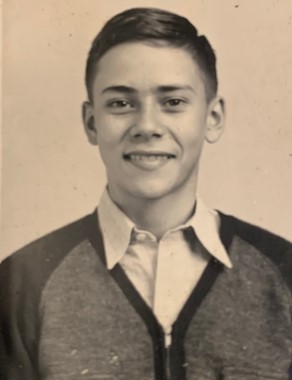
PFC Joseph Edward Ray
PFC Ray was born in Jefferson, Kentucky and a member of E Company, 307th Infantry Regiment, 77th Infantry Division when he landed on Okinawa on 1 April 1945. Only 19 years old, PFC Ray participated in the attack and conquest of nearby Ie Shima Island where he was wounded in the shoulder by shrapnel from a Japanese artillery shell. Less than two weeks later, PFC Ray re-joined his unit for an assault on Urasoe in the southern part of Okinawa. While sheltering from a Japanese mortar or artillery barrage with two other soldiers (PVT Loyd Maddux and PVT Howard Little), their position was struck by a high explosive shell and all three were killed. The body of PVT Little was recovered and buried in the Punchbowl Cemetery in Hawaii. PFC Ray’s and PVT Maddux’s remains have never been found and identified and they both are officially in “Unaccounted For” status to this day.
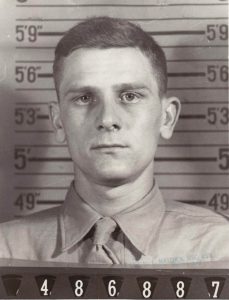
PFC Otto Reeder
PFC Reeder was born in Evansville, Indiana and a member of B Company, 1st Battalion, 2nd Marines when he landed on Tarawa on 20 November 1943. Two days later, PFC Reeder was killed by a gunshot wound to the head and was buried in what would later become one of Tarawa’s “Lost Cemeteries”. His remains have never been found and identified and PFC Reeder remains officially in “Unresolved” status.
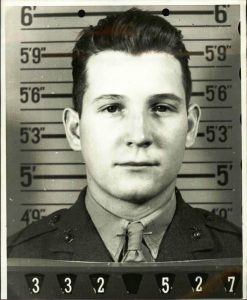
CPL Arthur Edward Ribeiro, Jr.
CPL Ribeiro was born in Buffalo, New York and a member of E Company, 2nd Battalion, 2nd Marines when he landed on Tarawa’s Red Beach 2. CPL Ribeiro was known as “Art” to his family and friends and had a twin brother. On 21 November 1943, CPL Ribeiro received multiple gunshot wounds and died on that day. CPL Ribeiro was identified after the battle buried at an unknown location on Tarawa. He officially remains in “Unresolved” status to this day.
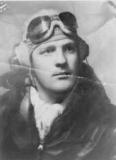
ARM2c Howard Martin Rivers
Aviation Radioman 2nd Class Howard Martin Rivers was born in Cleveland, Ohio and was known as “Red” to his family and friends. Over Saipan on June 18, 1944, a TBM1c airplane from the USS Gambier Bay, piloted by Ensign Jesse Boyce Holleman, was hit by ground fire and was set ablaze. Ensign Holleman steered the plane a safe distance off shore out to Tanapag Harbor where he successfully ditched in the sea on a reef close to Managaha Island. When Ensign Holleman landed, there was no sign of his 2 crew members, including ARM2c Rivers, who apparently bailed out over Saipan. Ensign Holleman was badly burned and was picked up by an American landing craft and eventually sent back to the United States. The lost crew members, including ARM2c Howard Martin Rivers, remain “Unaccounted For” to this day.
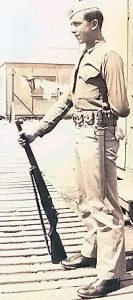
PFC Myrl Melvin Sauers, Jr.
PFC Sauers was born in Santa Cruz, California. “Mel” wrote to his grandmother that he grew two inches taller and added 25 pounds to his frame after he joined the Marines. He was a member of L Company, 3rd Battalion, 8th Marines when he attempted to land on Tarawa’s Red Beach 3 on 20 November 1943. PFC Sauers’ actions during the battle are unknown and he simply disappeared into history. PFC Sauers was listed as “Missing in Action” and he officially remains in “Unresolved” status to this day.
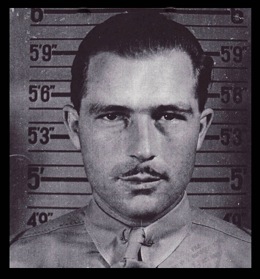
Warrant Officer Bernard Elmer Shealy
WO Shealy was born in Little Mountain, South Carolina. He was 18 years old when he first joined the Marine Corps in 1935. WO Shealy served on board the battleship USS Arizona as a member of the Marine Detachment before World War II. He was an expert marksman with rifle and pistol and competed in many competitions. After his term of enlistment was completed in 1939, WO Shealy rejoined the Marines the next day. He received training in an Amphibious Tractor Battalion and rapidly moved through the ranks. WO Shealy was a member of Headquarters Company, 2nd Amphibious Tractor Battalion when he attempted to land near Tarawa’s Red Beach 1 on 20 November 1943. He was killed by a gunshot wound to the temple and buried near the beach after the battle. His company mates built him a special grave marker inscribed “Happy Landings”. Despite photographic evidence of his known burial location, Warrant Officer Shealy has never been found and he officially remains in “Unresolved” status to this day.
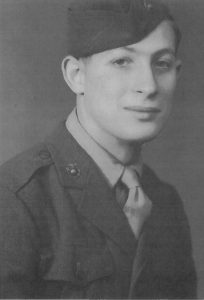
Private Clifford Siegel
PVT Siegel was born in Minneapolis, Minnesota but his family soon moved to Newark, New Jersey. Clifford worked in the grocery and meat market trades as a teenager until he enlisted in U.S. Marine Corps Reserves on 22 October 1942. PVT Siegel was unmarried but the left behind a fiancee, Ethel, when he went off to war. First trained as a member of a 90mm anti-aircraft gun team , PVT Siegel was transported to New Zealand in 1943 where he joined F Company, 2nd Battalion, 8th Marines as a rifleman. On the morning of 20 November 1943, PVT Siegel climbed down the rope ladder on the side of the transport ship USS Heywood into a waiting landing craft for the assault on Tarawa. He was never heard from again. PVT Siegel’s body was not found after the battle and he was not listed as buried in any cemetery. Unfortunately, PVT Siegel has yet to be recovered and identified and he remains in “Unresolved” status to this day.
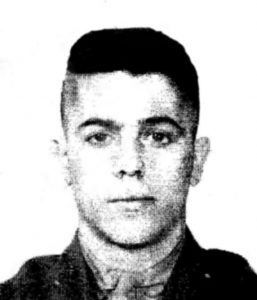
CPL Joseph Mike Simonetti
CPL Simonetti was born in Illinois and was a member of F Company, 2nd Battalion, 2nd Marines when he landed on Tarawa’s Red Beach 2 on 20 November 1943. CPL Simonetti was killed shortly after reaching the beach. After the battle he was identified and buried in a nearby cemetery on Tarawa. However, when his body was recovered in 1946, CPL Simonetti’s identity could not be confirmed and he was designated “X-36”. CPL Simonetti’s remains were identified by the Army Central Identification Laboratory in 1947 and he was buried in the Punchbowl Cemetery in Hawaii at the request of his family. CPL Simonetti is interred in Section 1, Grave 595 at the Punchbowl.
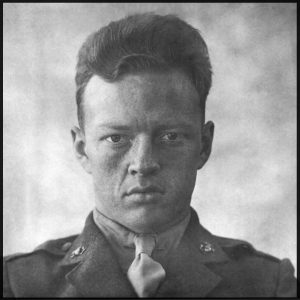
SGT Morris Wallace Skinner
SGT Skinner was born in Galveston, Texas and was known as “Red” to his family and friends due to his wavy, red hair and a face full of freckles. As a member of H Company, 2nd Battalion, 8th Marines, SGT Skinner was a machine gunner when he landed on Tarawa on 20 November 1943. He was reported Killed in Action by gunshots on that day. SGT Skinner’s body was found after the battle and buried in a Divisional Cemetery. Unfortunately, he has not been officially identified and remains in “Unresolved” status.
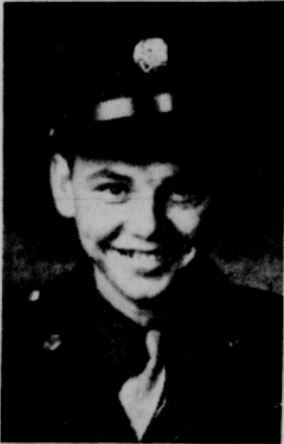
Private Jack General Smith
PVT Smith was born in Oskaloosa, Iowa and was drafted into the Army on 27 June 1944 leaving behind a wife and 3 year old son. As a member of K Company, 3rd Battalion, 382nd Infantry, 96th Division, PVT Smith was with his unit when it attacked Tombstone Ridge on Okinawa on 20 April 1945. His company commander later wrote that PVT Smith was killed by a sniper while attempting save a company mate by carrying the wounded man from the battlefield. The company commander indicated that a medic immediately tended to PVT Smith but was unsuccessful in saving his life. PVT Smith’s body was found after the battle and buried in a Divisional Cemetery on Okinawa prior to being sent home after the war for final interment in his family’s plot in Iowa. “Greater love hath no man than this, that a man lay down his life for his friends.”
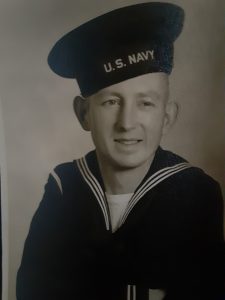
Radarman 2nd Class Joseph Mason Strain
Rdm 2c Joe Strain was born in Nodaway Township, Iowa and worked as a farm hand. Joe and his wife had a son born in 1942. Joe’s wife was seven months pregnant when he enlisted in the U.S. Navy Reserves in Des Moines, Iowa on 18 December 1943 and was given the rank of Apprentice Seaman (AS). His initial Navy training was a Camp Ward, Idaho. AS Strain was allowed to return home on leave in time for the birth of his baby daughter in February 1944. After basic training, Joe trained as a radar operator and was assigned to the cruiser USS Indianapolis. He served continuously on board the Indy until the ship was torpedoed by Japanese submarine I-58 on 30 July 1945. A Foundation investigation determined that the body of Rdm 2c Strain was recovered from the ocean near the sinking site and identified on 5 August 1945 before he was given a “Burial at Sea.” Despite his burial, Rdm 2c Strain continues to be listed as “Unaccounted For” by the Defense POW/ MIA Accounting Command. The Foundation has provided documentary evidence of Rdm 2c Strain’s official burial at sea to the U.S. Navy’s Naval History and Heritage Command and is working with Indy survivors organizations and the Navy to have Rdm 2c Strain’s MIA status changed.
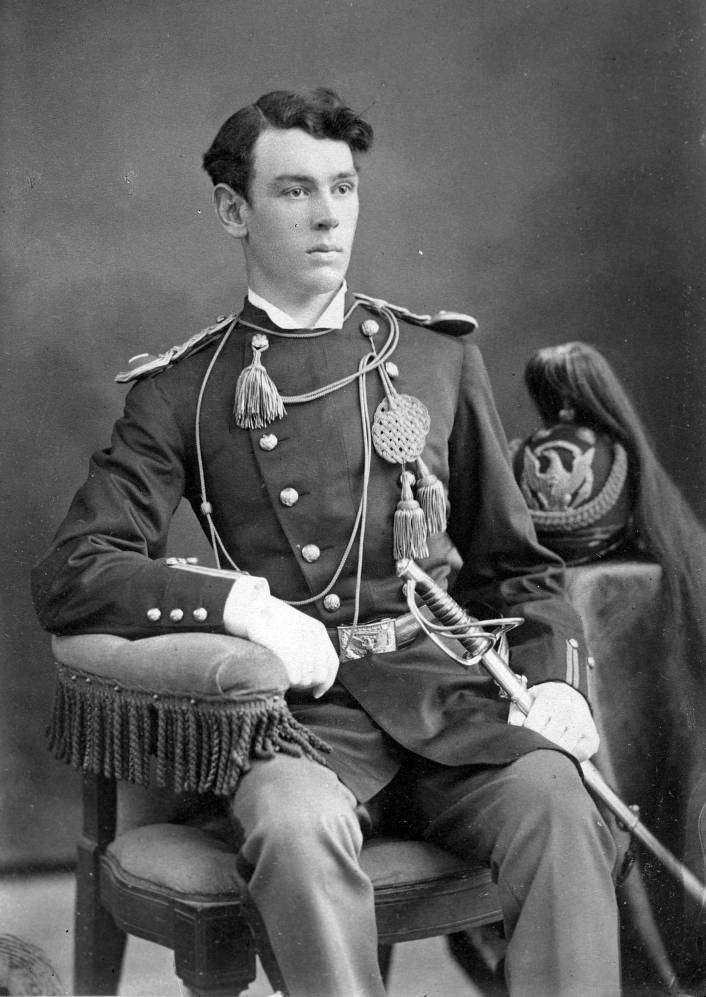
2nd Lieutenant James Garland Sturgis
James Garland Sturgis was born in Albuquerque, New Mexico. The son of Colonel Samuel Sturgis and Jerusha Wilcox Sturgis, James had dark hair and a fair complexion. He had three older sisters and one younger brother. James received an “at large” appointment to West Point in 1871. When he graduated as a 2nd Lieutenant with the Class of 1875, James ranked 29th out of 43 cadets. LT Sturgis was assigned to the 7th Cavalry immediately after graduation on 16 June 1875 and ordered to report to Fort Abraham Lincoln, Dakota Territory. He was with Lieutenant Colonel George Armstrong Custer when he led his men into the Battle of the Little Bighorn on 25 June 1875. All 210 men of Custer’s command were killed in action, including LT Sturgis. In 2023, the Foundation provided a comprehensive “Family Report”, as requested, to LT Sturgis’ family. Based on this investigation, Foundation researchers believe that LT Sturgis fell near what is now labeled Marker Number 48 on the battlefield amidst troopers from E Company that LT Sturgis had led in a counter attack against the Indians. His body was not identified but it is likely that LT Sturgis was ultimately buried as an “Unknown” at the base of the Little Bighorn Battlefield National Monument.
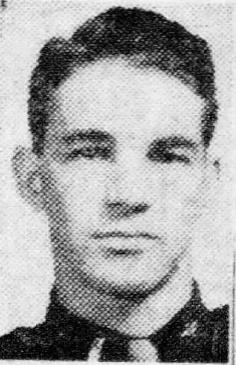
2nd Lieutenant John Young Thames, Jr.
LT Thames was born in Harrison Township, Pennsylvania and graduated from Carnegie Tech University with a BS in Aeronautical Engineering. He enlisted in the U.S. Army Air Corps in 1942 and was trained to fly the P-39 Airacobra. On 22 January 1944, LT Thames and his wingman took off from Makin Airfield near the Tarawa Atoll for a routine combat patrol. LT Thames’s fighter suffered a high speed stall from excessive rate of turn, causing a spin and loss of control. The Airacobra, nicknamed “Big Operator”, crashed into the sea about a mile west of Tarawa. No trace of LT Thames or his aircraft was ever found and he remains “Unaccounted For” to this day.
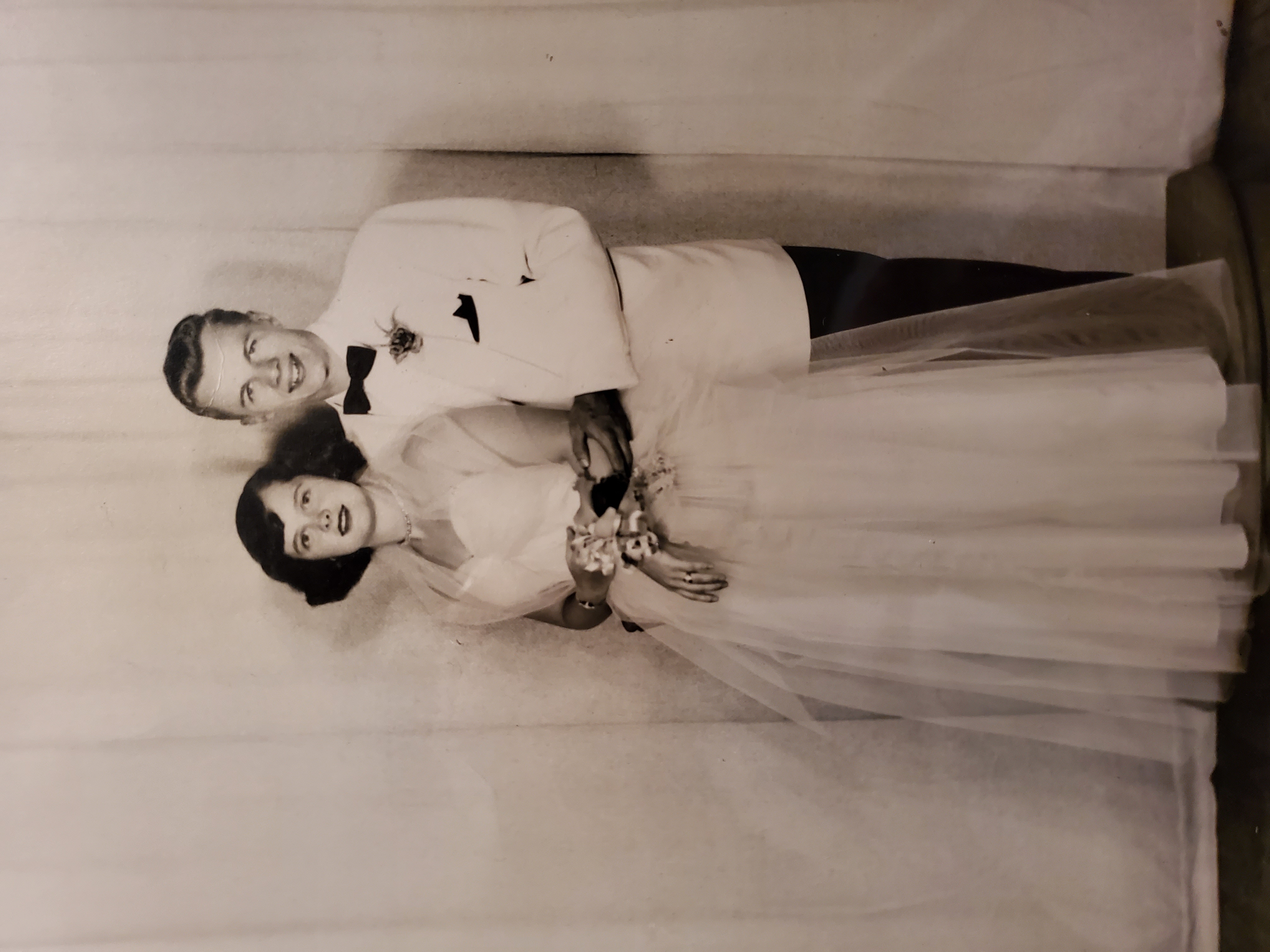
Corporal William Frank Thompson and wife, Vivian
Corporal Thompson was born in Mahanoy City, Pennsylvania where his father was employed in the coal mining industry. He married Vivian (pictured above) and enlisted in the United States Marine Corps on 9 October 1952 in Philadelphia, Pennsylvania. After enlistment, PVT Thompson was sent to the Marines Corps Recruit Depot in Parris Island, South Carolina for basic training. On 14 January 1953, PFC Thompson was transferred to the 2nd Air Delivery Platoon, Service Command, Fleet Marine Force, stationed at Camp Lejeune, North Carolina where he served for almost three years, rising to the rank of Corporal. CPL Thompson was discharged in 1955 and died in 1986 at age 52.
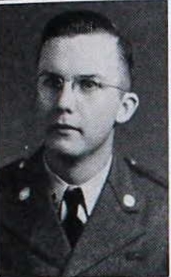
Captain Walter Perrin Tribble
CAPT Tribble was born in South Carolina and was a member of the ROTC program at what later became Clemson University. He was a crew member on a B-29 bomber that was shot down over Tokyo on 23 May 1945 and was held as a Japanese POW until the end of the war. On 22 November 1952, Captain Tribble was a passenger on a C-124A transport plane that crashed on Mount Gannett in Alaska. He remained missing until Chief Stone investigated his case in 2012 based on wreckage sighted on the glacier. Captain Tribble was finally identified and returned home to his family in 2017.
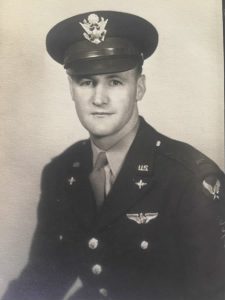
2nd Lieutenant Donald Eugene Underwood
2nd LT Underwood was born in Michigan and enlisted in the U.S. Army Air Corps on 22 February 1942. He was the bombardier on a B-24 bomber named “Miss Bee Haven” that crashed soon after takeoff from Tarawa on 21 January 1944. A report by the Foundation requested by the U.S. Congress determined that 2nd LT Underwood that of six other airmen were buried in a section of a cemetery on Tarawa that had not yet been discovered. In February 2017, 2nd LT Underwood was found in the location specified in the Foundation’s Congressional report. He was identified in September 2017 and returned home for burial by his family.
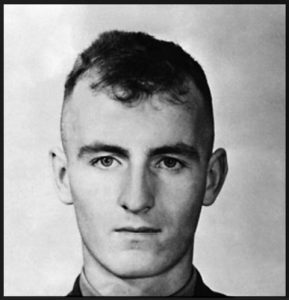
PFC Orson La Moyne Walton
PFC Walton was born in Auburn, Washington and a member of L Company, 3rd Battalion, 8th Marines when he landed on Tarawa on 20 November 1943. His company was assigned to land on Red Beach 3 and PFC Walton was wounded by gunshots and later died on that day. PFC Walton’s body was identified after the battle and he was buried in a Divisional Cemetery however he has yet to be identified as a recovered set of remains. PFC Walton is officially in “Unresolved” status.
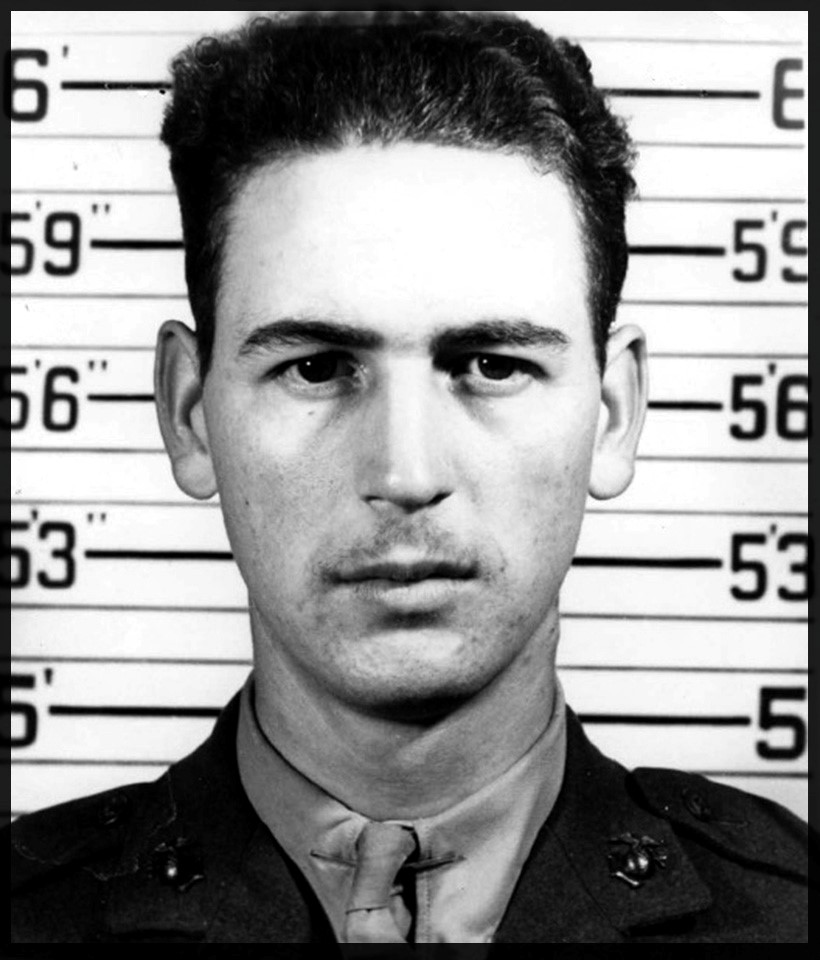
CPL Herman Leland Way
Corporal Way was born in Parkdale, Oregon and joined the Marine Corps on 10 January 1940. He was a member of A Company, 1st Battalion, 8th Marines when he landed on Tarawa on 21 November 1943. His company was assigned to land on Red Beach 2. Many Marines in CPL Way’s company and three of their seven officers were wounded or killed in an attempt to reach the beach. After seventy-five minutes of wading toward the beach under intense fire, only about half of the 1st Battalion, 8th Marines made it to shore. CPL Way’s body was not identified after the battle and he has yet to be recovered and identified. CPL Way is officially in “Unaccounted For” status.
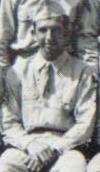
Technical Sergeant Franklin Joseph Weber
TSGT Weber was born in Buffalo, New York and enlisted in the U.S. Army on 24 October 1939. He served with the 5th Infantry Division in Iceland before joining the 75th Infantry Division in 1943. TSGT Weber was a member of G Company, 2nd Battalion, 291st Regiment during the Battle in the Ardennes (Battle of the Bulge) and was wounded in action at the Battle of the Colmar Pocket. For his battle actions, TSGT Weber received the Purple Heart, the Belgian Croix de Guerre, and many other campaign medals. TSGT Weber survived his wounds and was honorably discharged in 1945. He died at age 70 in 1992.
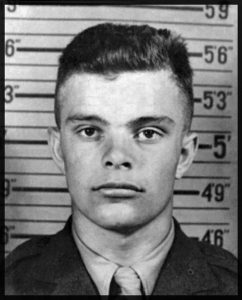
PFC John Cyrus Westfall, Jr.
PFC Westfall was born in Miami County, Ohio and a member of A Company, 1st Battalion, 8th Marines when he landed on Tarawa on 21 November 1943. His company was assigned to land on Red Beach 2 and PFC Westfall was reported Killed in Action on that day. PFC Westfall’s body was not identified after the battle and he officially remains in “Unresolved” status.
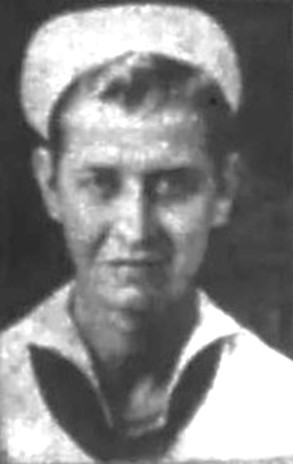
Seaman 2nd Class James Ueal Williams
James Ueal Williams was born in Dayton, Tennessee to James Alfred Williams and Martha Magdalin Burwick Williams. Ueal grew up in the church and was a model boy who gave his parents little trouble. He had a love of excitement and adventure, however, and coaxed his parents into signing the papers so that he might volunteer. He had only completed 7 years of school when he enlisted in the U.S. Navy Reserves in Nashville, Tennessee on 23 July 1942. He was aboard the destroyer USS Cushing when the ship encountered multiple Japanese destroyers and cruisers off Savo Island near Guadalcanal on the night of 13/14 November 1942. That night, the Cushing was the lead ship in a column of 13 US warships that moved out to intercept the Japanese fleet in the first naval night action of the Pacific war that would become known as the “Naval Battle of Guadalcanal”. Struck multiple times by several Japanese warships, the Cushing went down taking S2c Williams and sixty of his crewmates who remain missing to a watery grave in “Iron Bottom Sound.” When S2c Williams was killed aboard the USS Cushing, he had been in the Navy less than four months and a member of the ship’s crew for fifty-nine days.
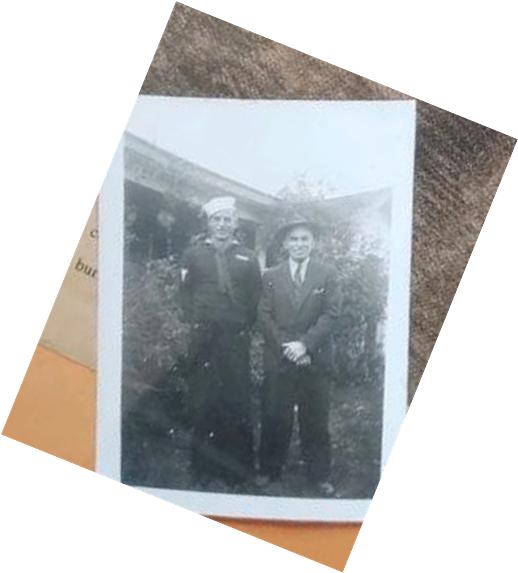
Gunner’s Mate 3rd Class Floyd Ralph Wolfe
Floyd Ralph Wolfe was born in Artesian, South Dakota to William Charles Wolfe and Elma Rosana Saley Wolfe. At the time of the 1940 census, Floyd was living as a lodger in a hotel in Anchorage, Alaska where he worked as a gold miner for the Triple X Mine. Floyd reported he had completed one year of high school when he enlisted in the U.S. Navy Reserves in Portland, Oregon on 9 December 1942. While aboard the USS Indianapolis, GM3c Wolfe participated in the battles at the Gilbert Islands, Tarawa, Marshall Islands, Eniwetok, Kwajalein, Marianas, Saipan, Okinawa, Guam and Tinian. GM3c Wolfe then served continuously aboard the Indianapolis until the ship was torpedoed on 30 July 1945. A Foundation investigation determined that the body of GM3c Wolfe was recovered from the ocean near the sinking site on 7 August 1945 before he was given a “Burial at Sea.” Despite his burial, GM3c Wolfe continued to be listed as “Unaccounted For” by the Defense POW/ MIA Accounting Command. The Foundation provided documentary evidence to the U.S. Navy’s Naval History and Heritage Command of GM3c Wolfe’s official burial at sea using an investigation of markings on his uniform. On 23 May 2022, the Navy announced that GM3c Wolfe’s MIA status had been officially changed to “Recovered – Buried at Sea.”

